Art History Midterm 2025
1/35
There's no tags or description
Looks like no tags are added yet.
Name | Mastery | Learn | Test | Matching | Spaced |
|---|
No study sessions yet.
36 Terms
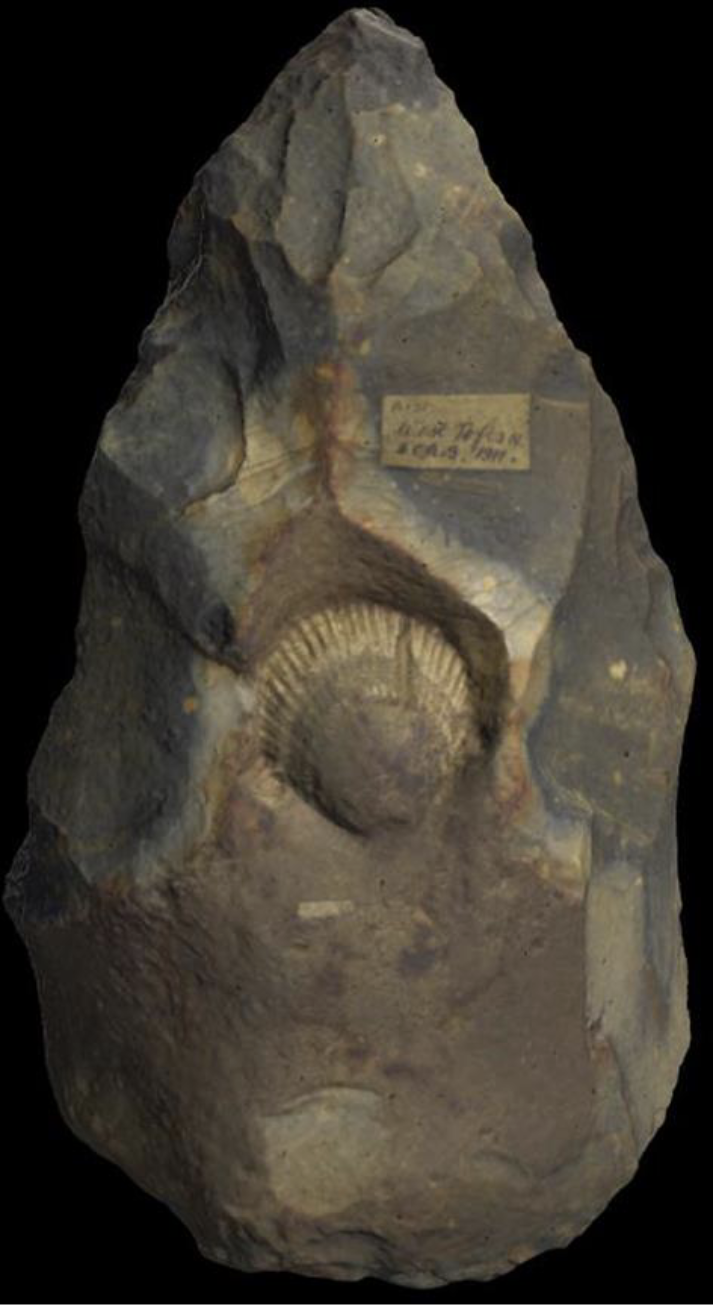
Flint Acheulean handaxe with fossilized shell c. 250,000 BCE
PREHISTORY
Themes -
The influence of the natural environment in art
Art in relation to “prehistory,” “history,” and the concept of “civilization”
The influence of technology and technical skill in art
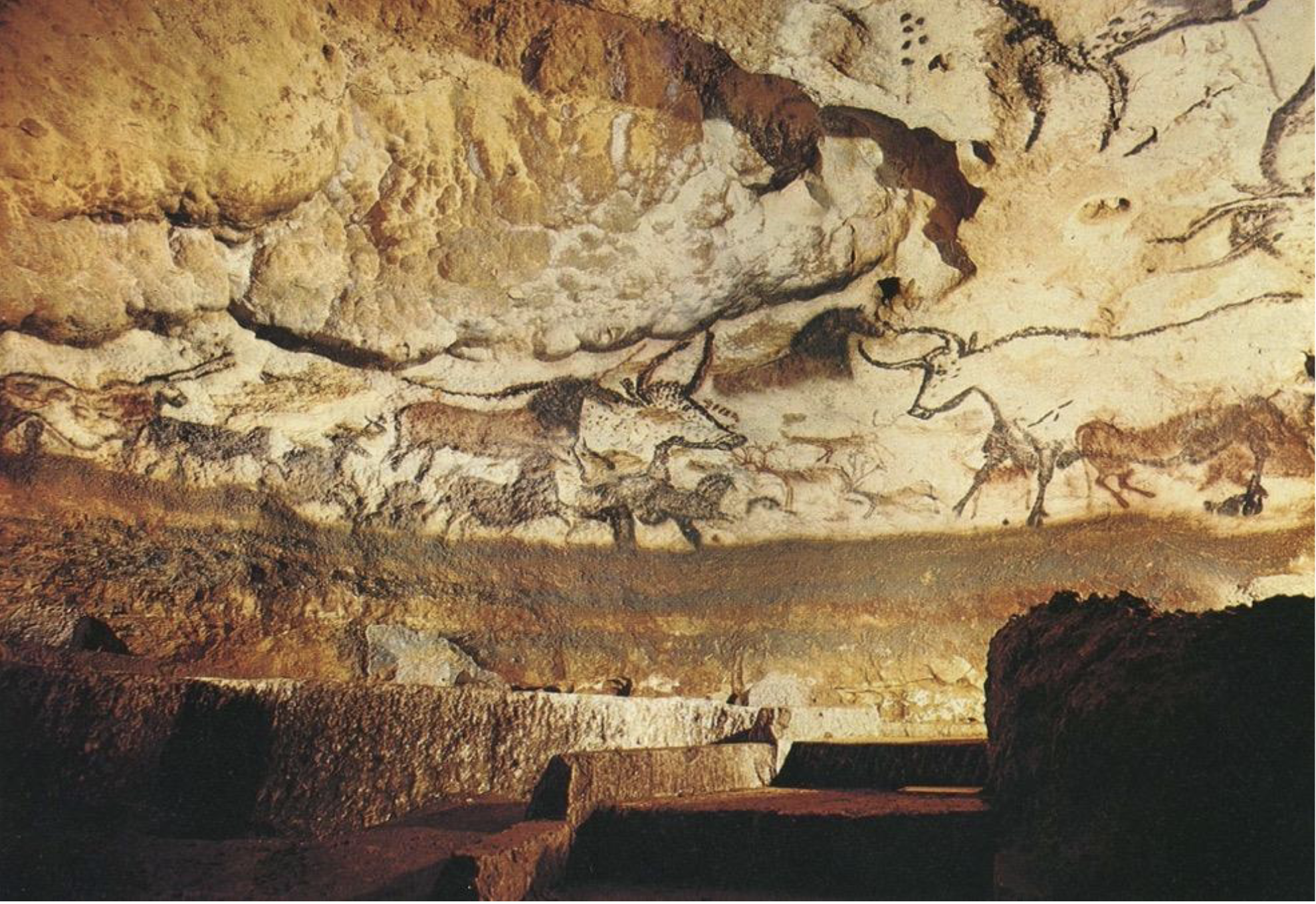
Great Hall” or “Hall of the Bulls” Cave Paintings at Lascaux, France, c. 16,000-14,000 BCE
PREHISTORY
Themes -
The influence of the natural environment in art
Art in relation to “prehistory,” “history,” and the concept of “civilization”
The influence of technology and technical skill in art
The role and position of artists in society
The role of archeology as evidence
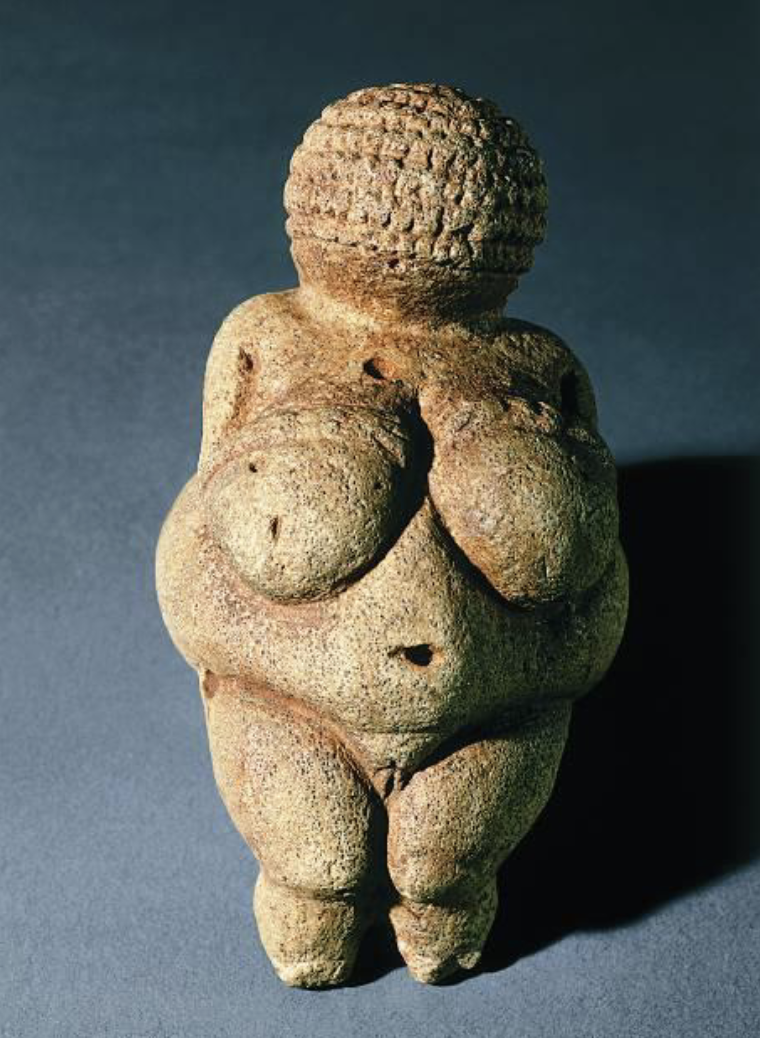
“Venus” of Willendorf, Austria, limestone, c. 28,000-25,000 BCE 4.5 in 39 Figure
PREHISTORY
Themes -
Art in relation to “prehistory,” “history,” and the concept of “civilization”
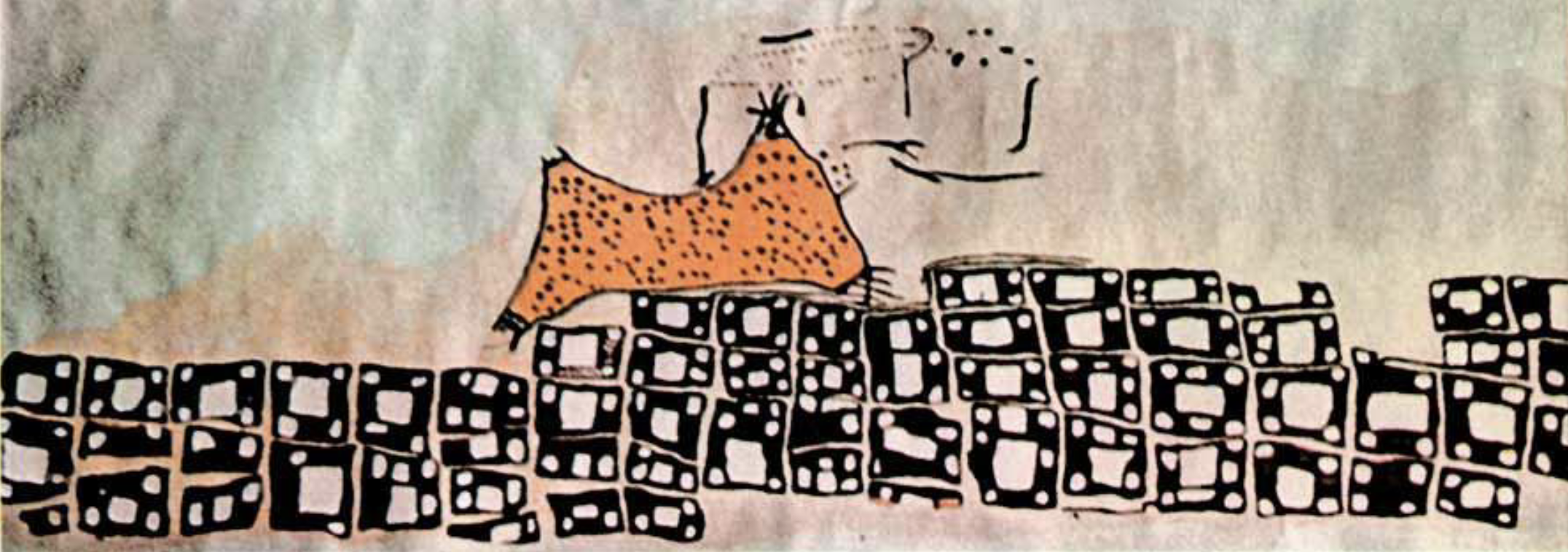
City and Volcano Mural, Çatalhöyük Reconstruction painting
PREHISTORY
Themes -
The influence of the natural environment on art
Art in relation to “prehistory,” “history,” and the concept of “civilization”
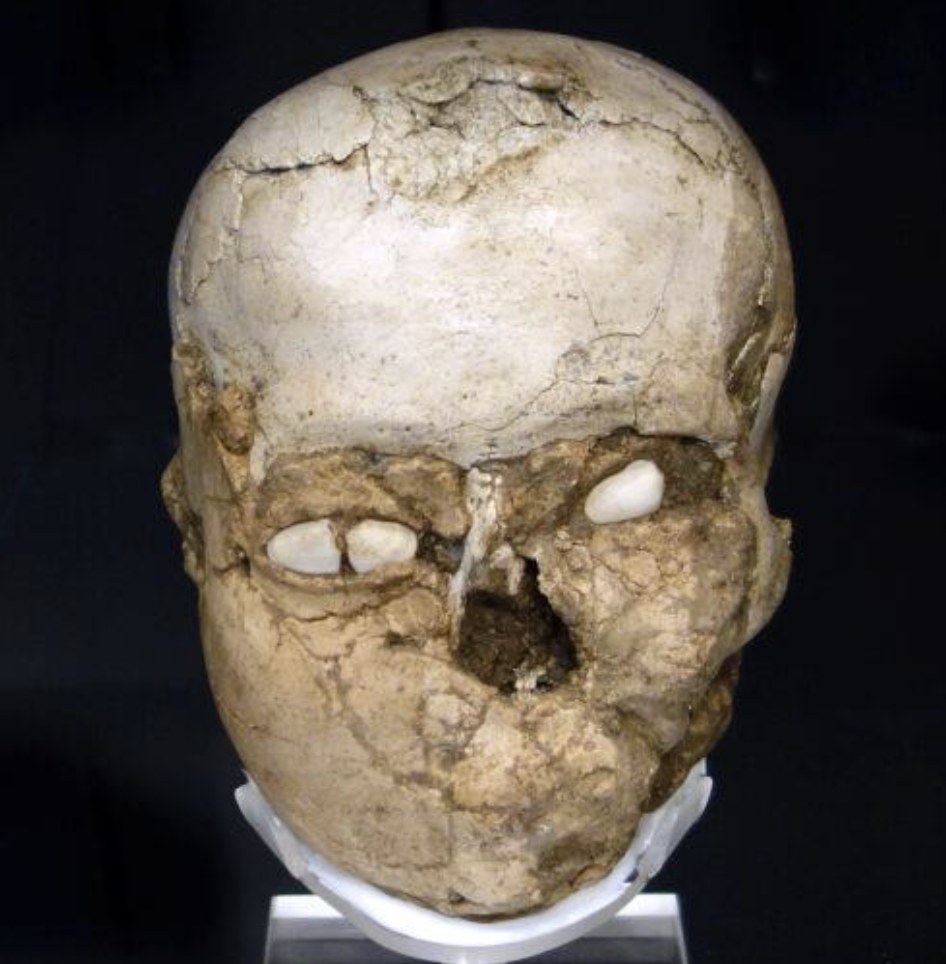
Plastered Skulls with shell eyes, Jericho, Palestine, c. 7000-6000 BCE
PREHISTORY
Themes -
Art in relation to religion, ritual, mythology, spirituality, etc
Art in relation to “prehistory,” “history,” and the concept of “civilization”
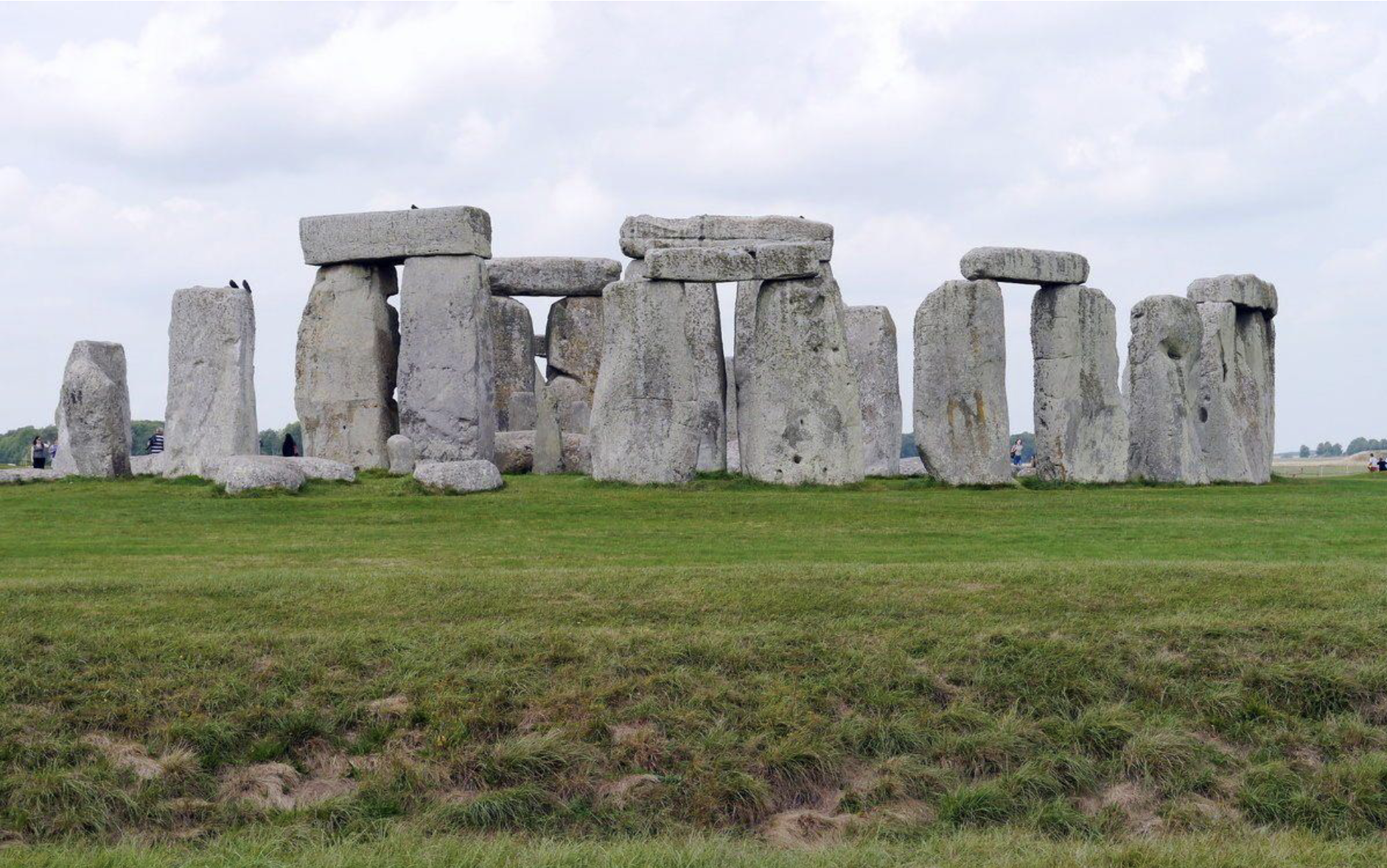
Stonehenge, Salisbury Plain, Wiltshire, England, c. 2750-1500 BCE
PREHISTORY
Themes -
The influence of the natural environment in art
The influence of technology and technical skill in art

Standard of Ur mosaic of shell, lapis lazuli, and red limestone c. 2600-2400 BCE 17 War Peace
MESOPOTAMIA
Themes -
Art as a representation of politics and government
Art as a representation of and/or tool of warfare
Art as a reflection and/or cause of social stratification
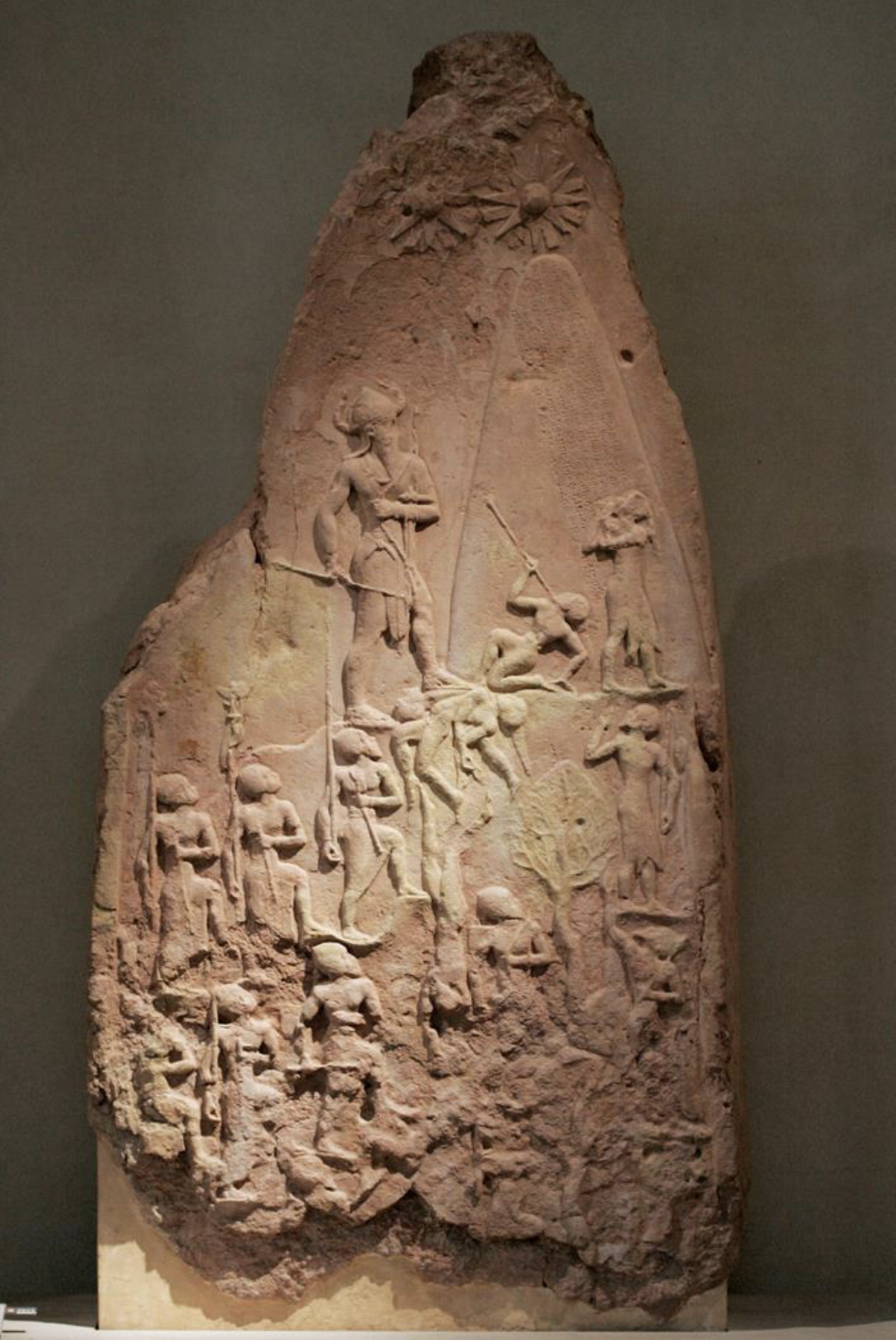
Victory Stele of Naram-Sin, c. 2254-2218 BCE
MESOPOTAMIA
Themes -
Art as a representation of politics and government
Art as a representation of and/or tool of warfare
Art as a reflection and/or cause of social stratification
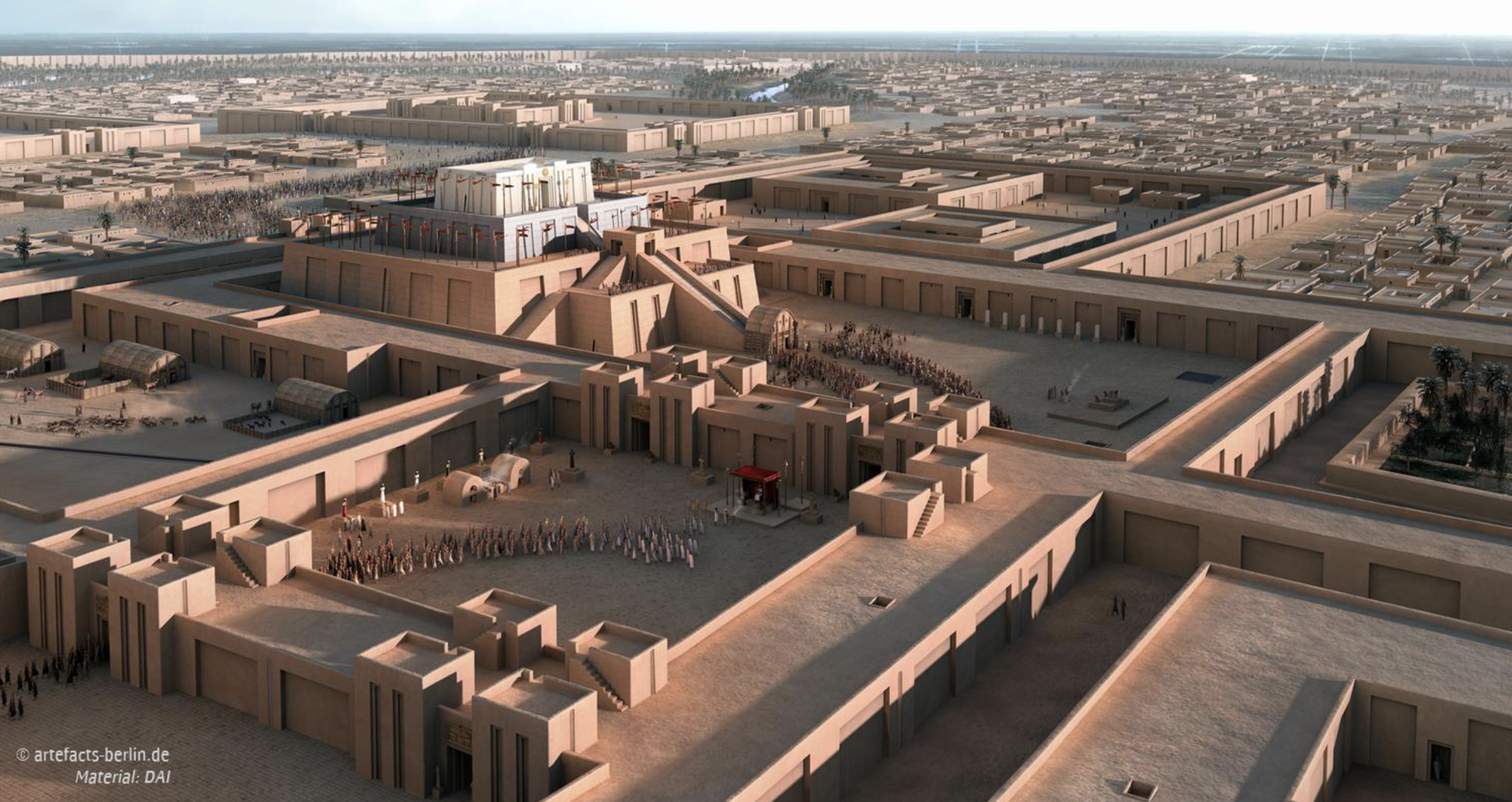
Ziggurat of Ur (c. 3800-500 BCE, Iraq)
MESOPOTAMIA
Themes -
Art in relation to “prehistory,” “history,” and the concept of “civilization”
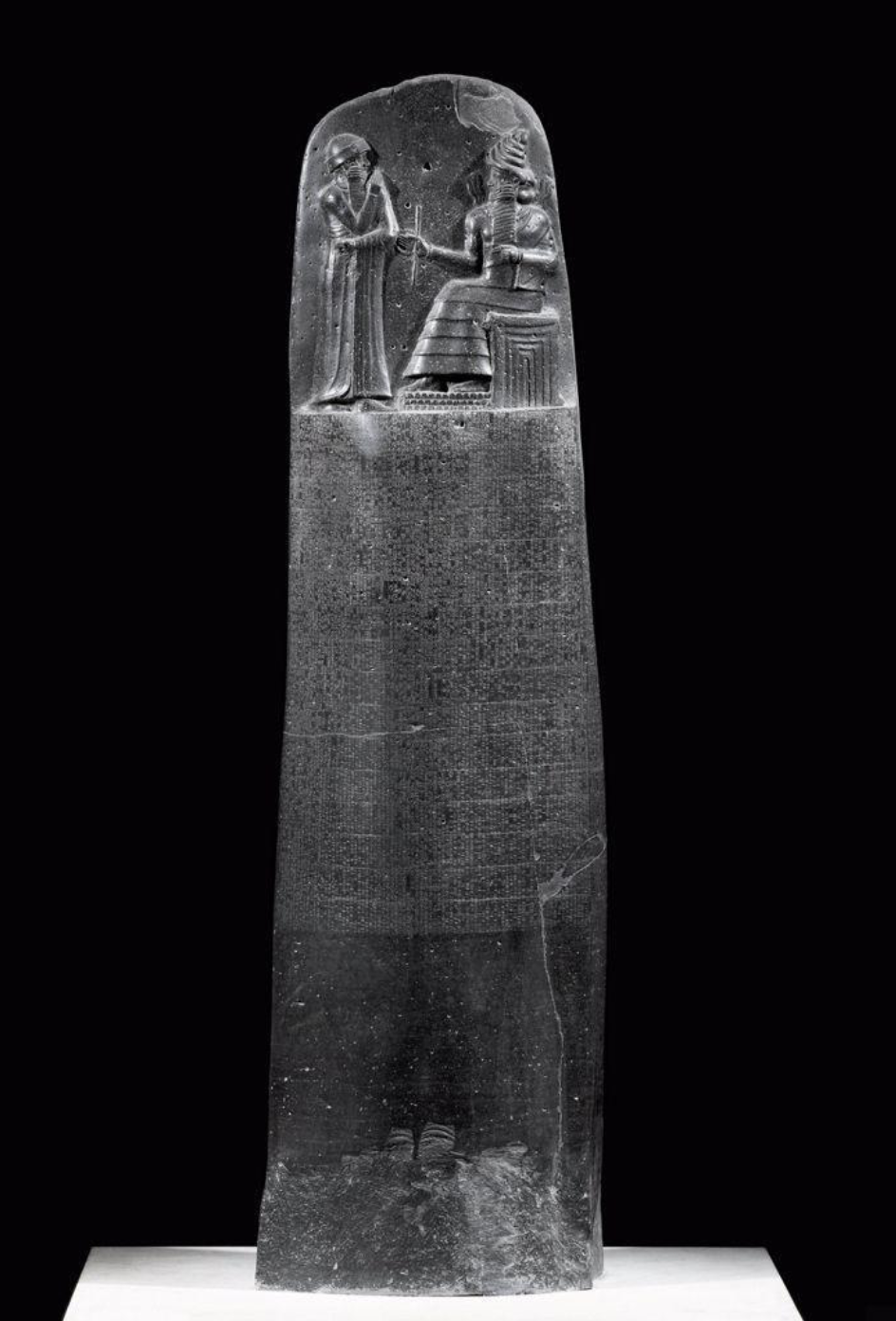
Code of Hammurabi, Babylon, c. 1754 BCE Babylonian 4
MESOPOTAMIA
Themes -
Art as a representation of politics and government
The impact of writing on art and the written record in defining the history of art
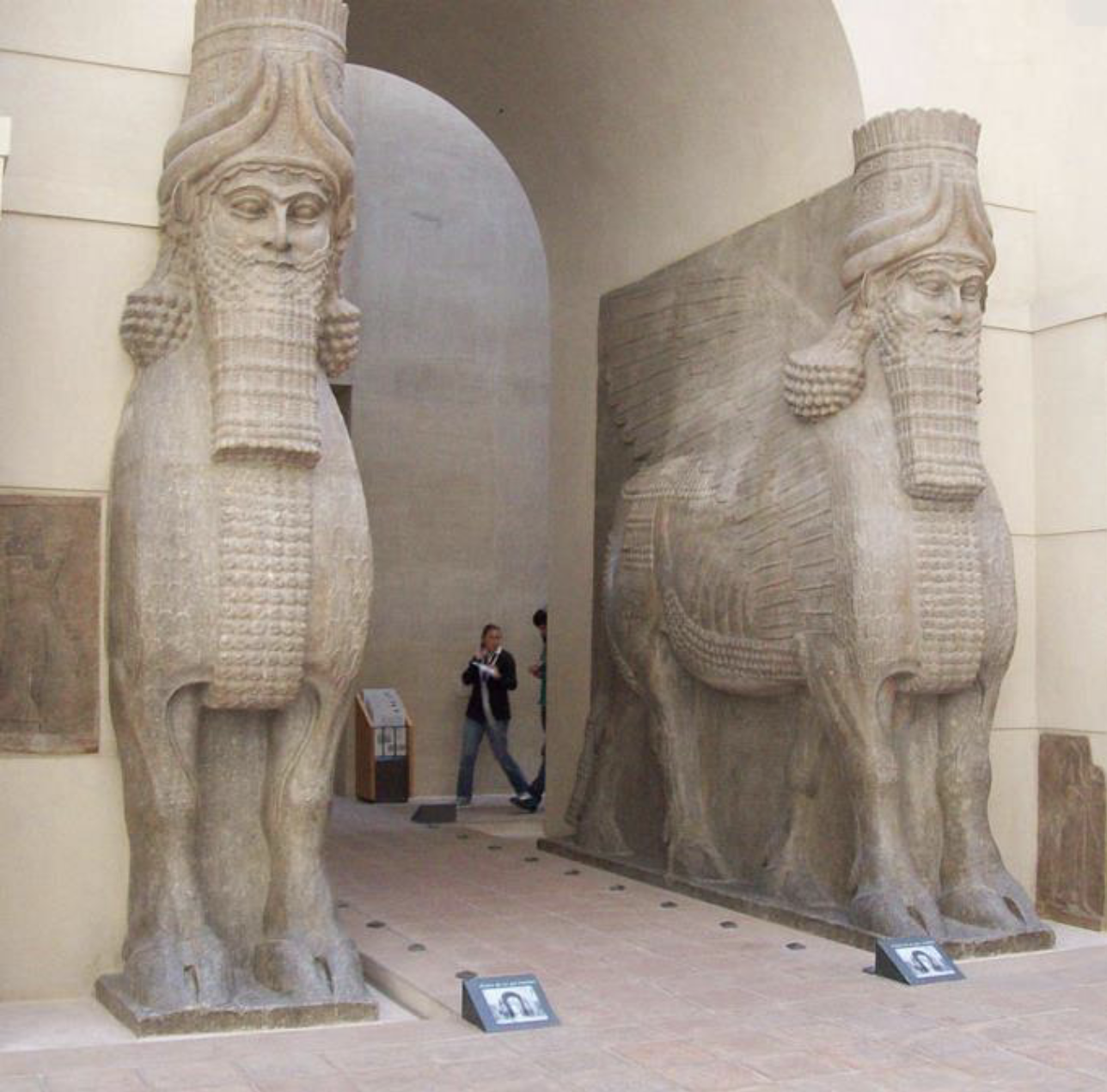
Lamassus at the Palace of Khorsabad, Iraq, c. 720 BCE
MESOPOTAMIA
Themes -
couldn’t think of any deadass
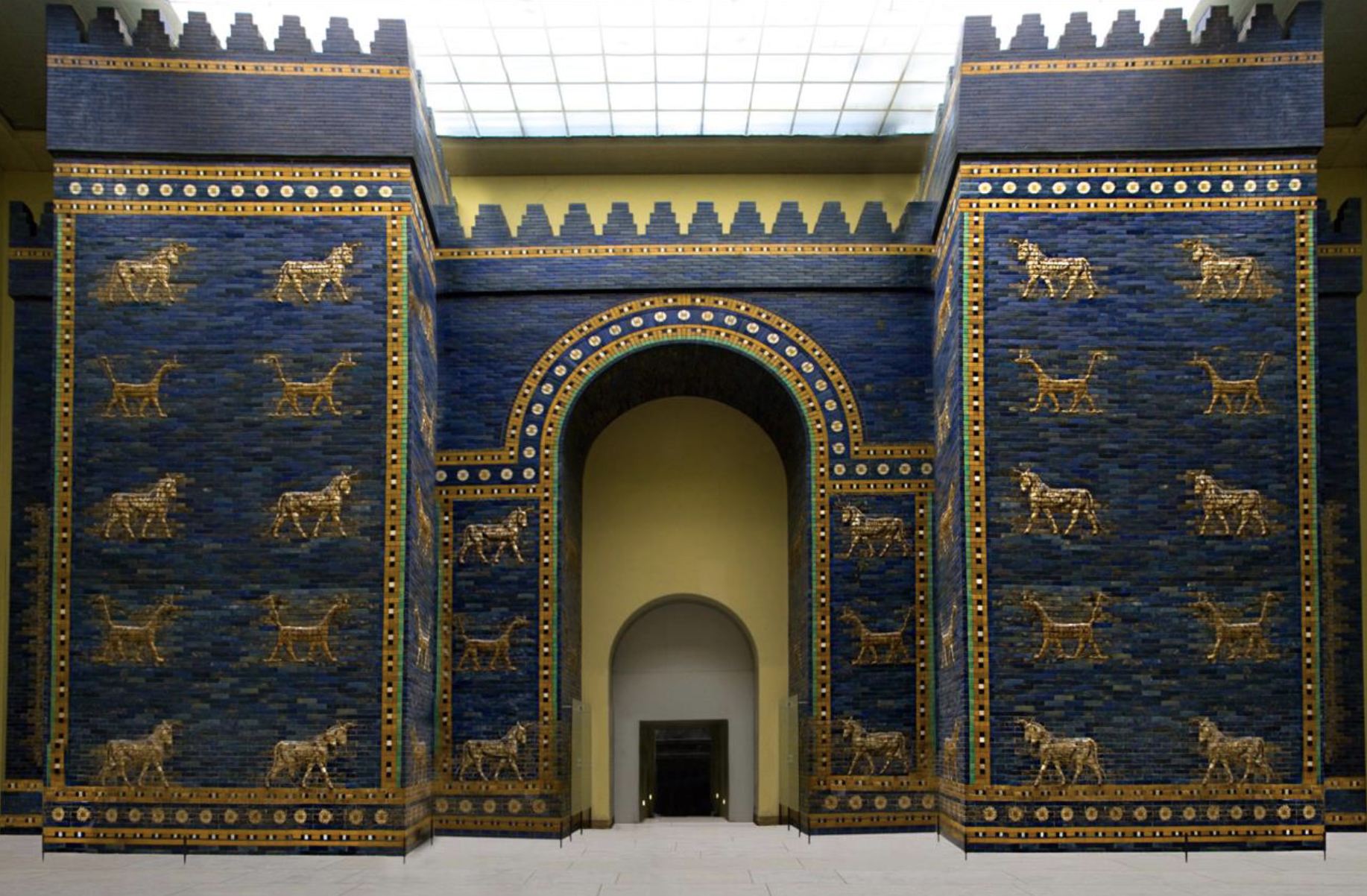
The Ishtar Gate, Babylon, c. 575 BCE
MESOPOTAMIA
Themes -
The influence of the natural environment in art
Art as a representation of politics and government
The influence of technology and technical skill in art
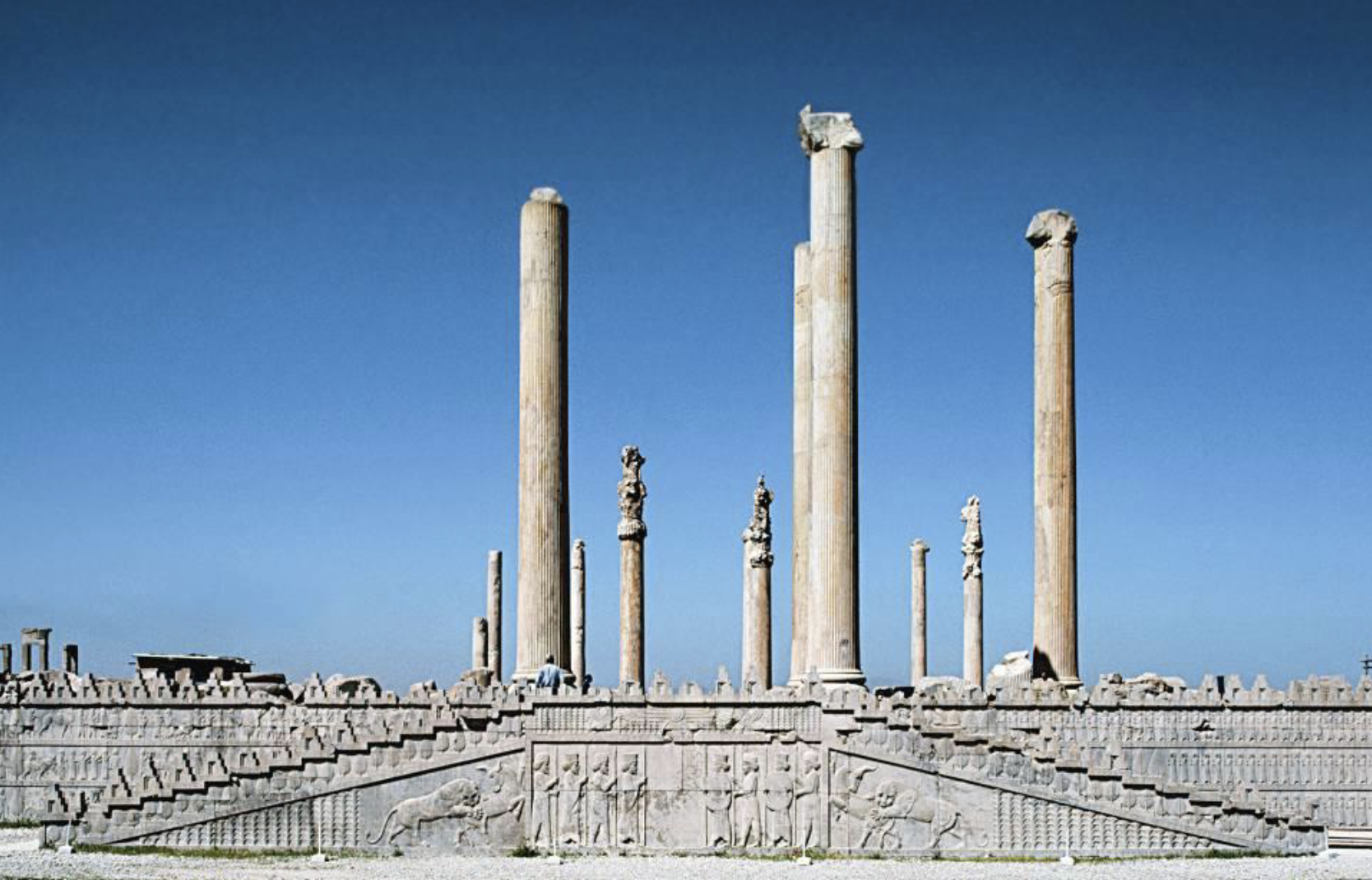
Apadana, or Audience Hall of Darius and Xerxes, Persepolis, Iran, c. 518-330 BCE
MESOPOTAMIA
Themes -
Exchange of ideas, techniques, and/or symbols across cultures
The role of archeology as evidence
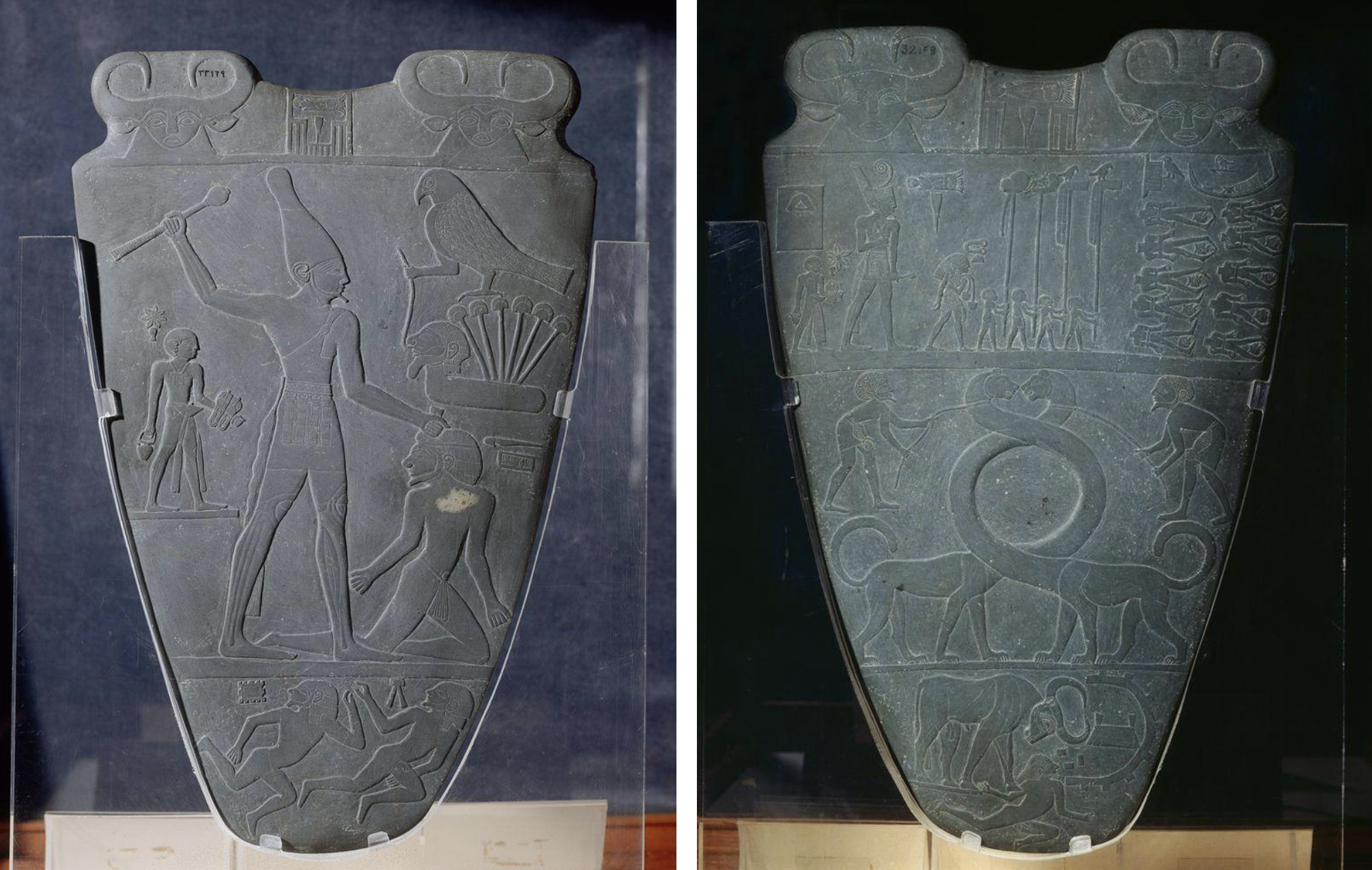
Palette of King Narmer, First Dynasty, c. 3500-3000 BCE
EGYPT
Themes -
Labor practices of making art
Art as a representation of politics and government
Art as a reflection and/or cause of social stratification
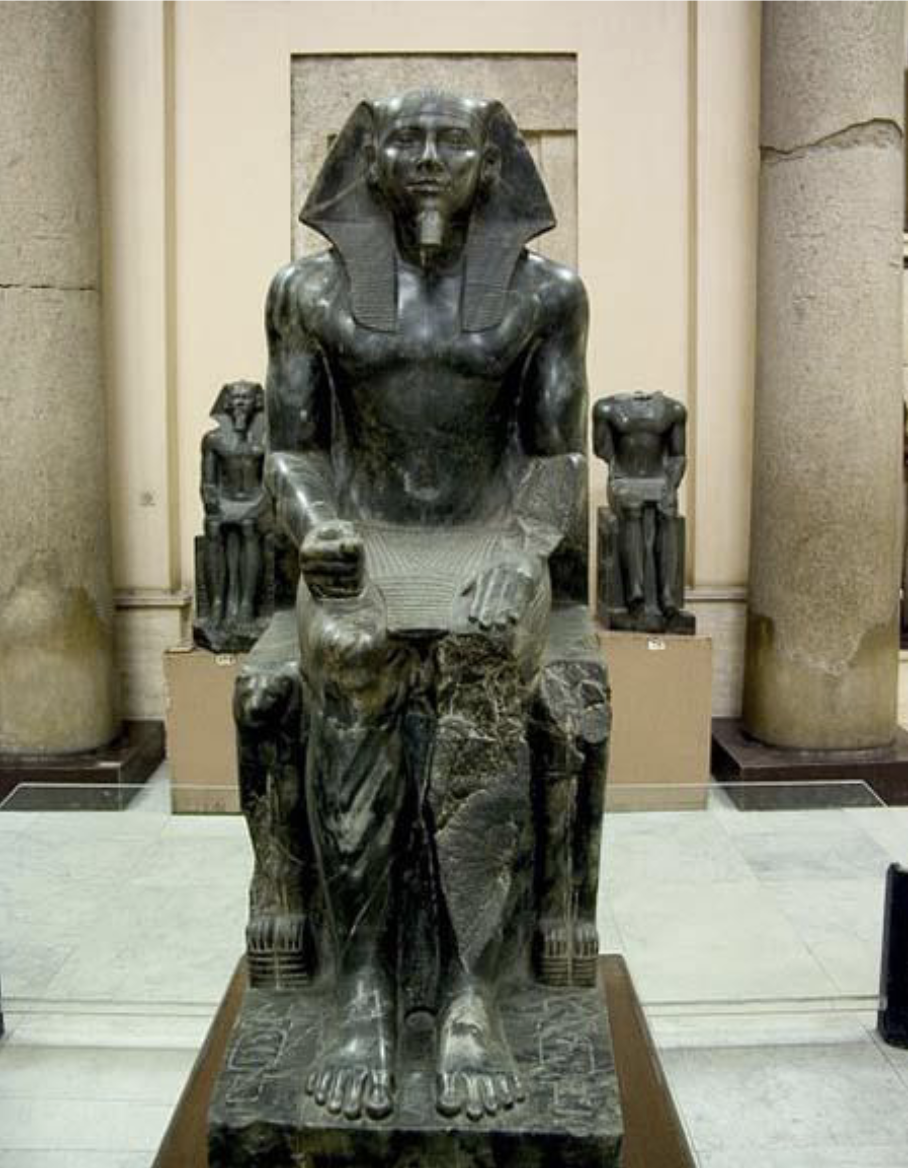
Khafre diorite, 5’ 6” high Fourth Dynasty, c. 2520-2494 BCE 28
EGYPT
Themes -
Art as a representation of politics and government
Art as a reflection and/or cause of social stratification
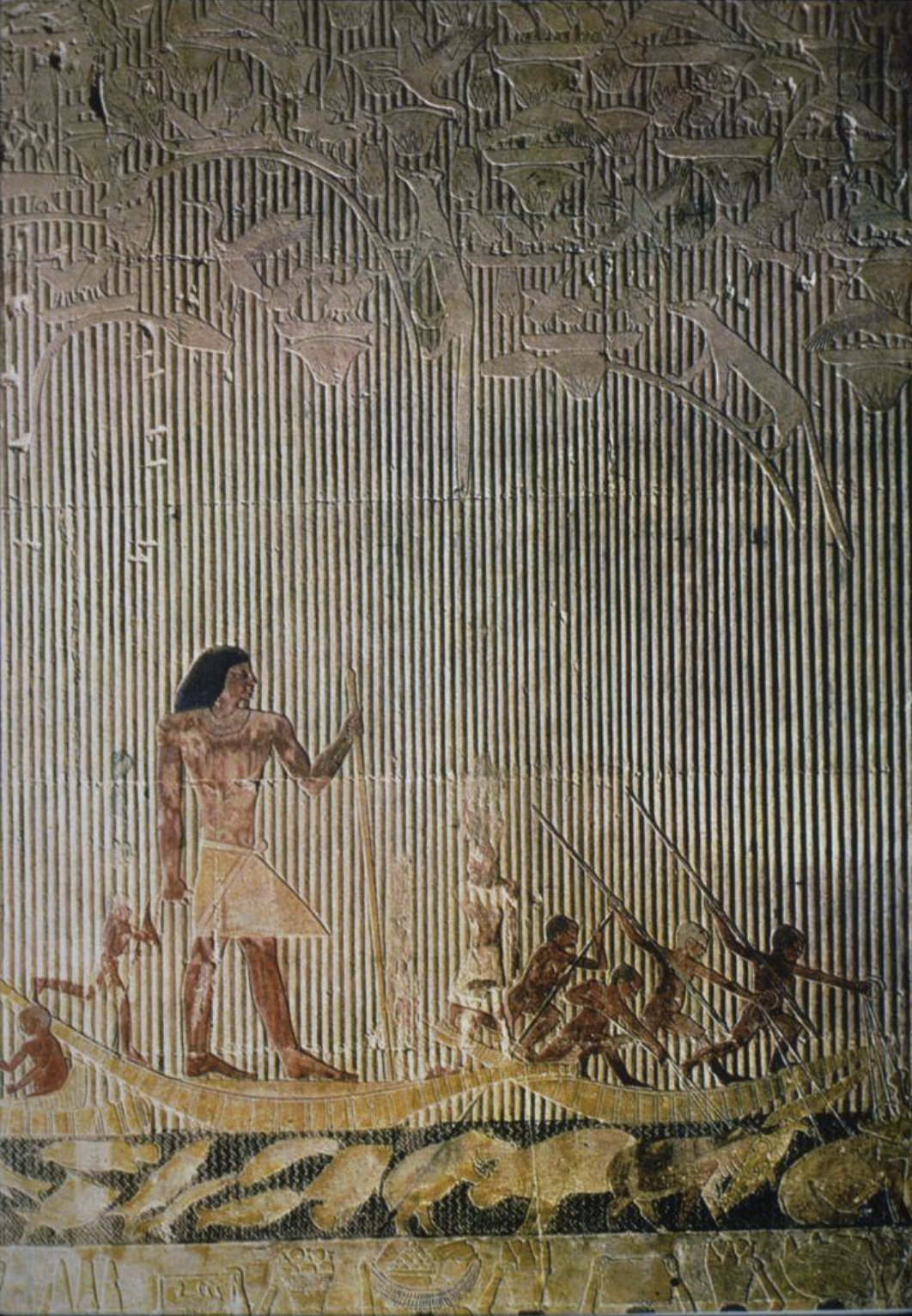
Ti Hunting Hippos from his tomb, Saqqara painted limestone, 4’ Fifth Dynasty, c. 2450-2350 BCE
EGYPT
Themes -
The influence of the natural environment in art
Art as a representation of politics and government
Art as a reflection and/or cause of social stratification
Art in relation to “prehistory,” “history,” and the concept of “civilization”
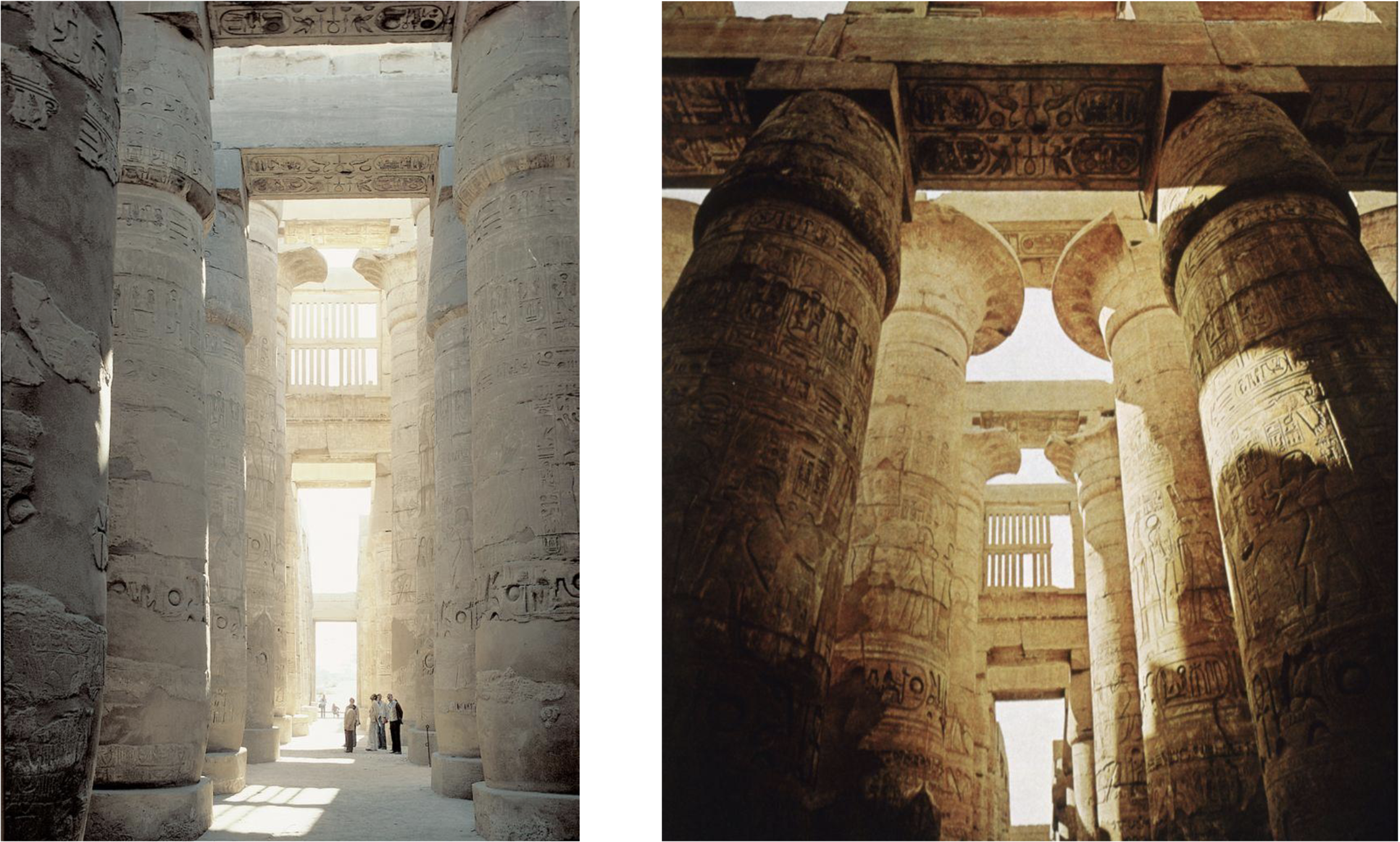
Hypostyle Hall of Temple to Amen-Re, Karnak, c. 1400 BCE
EGYPT
Themes -
The influence of the natural environment in art
The role of archeology as evidence
Exchange of ideas, techniques, and/or symbols across cultures
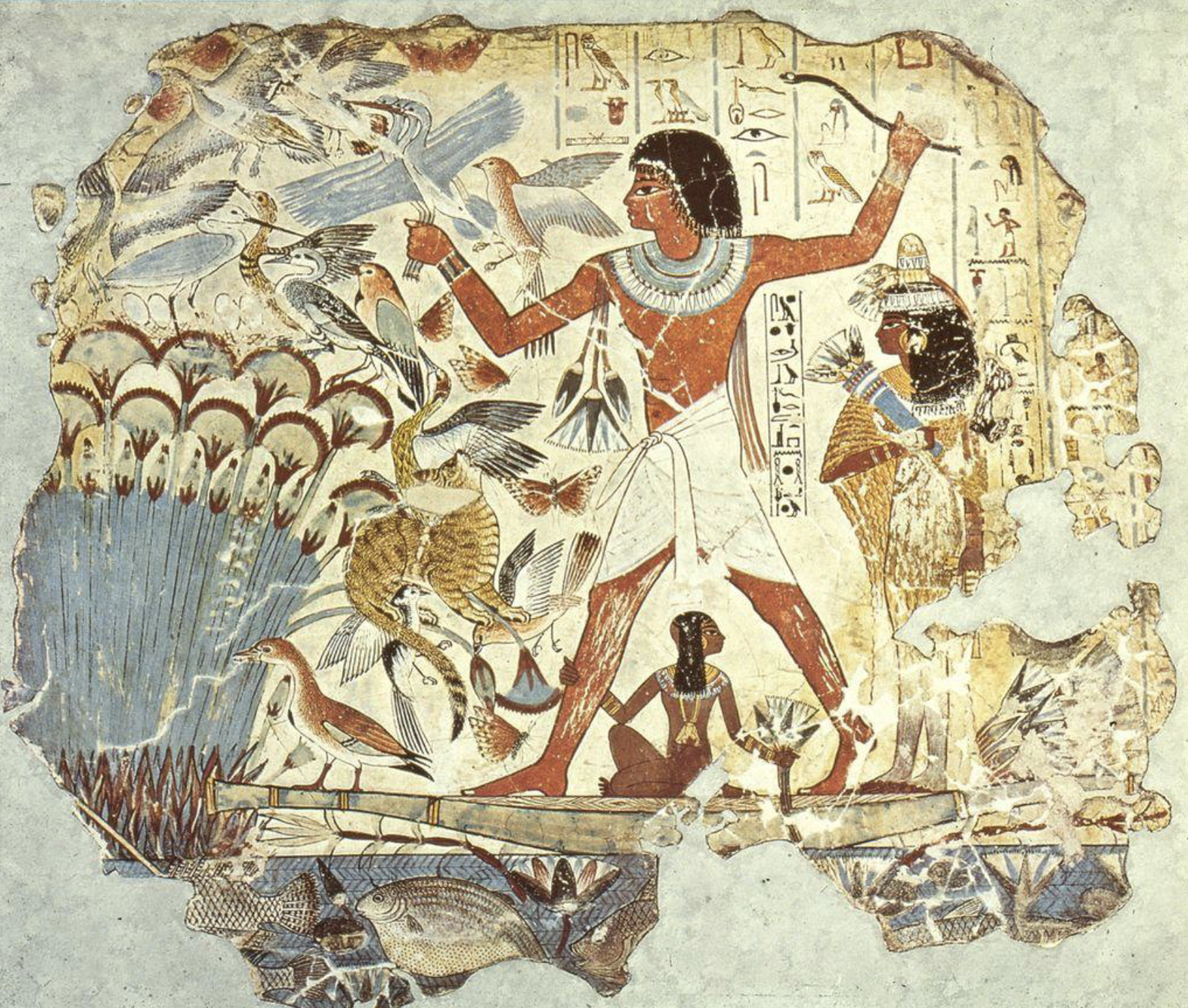
Nebamun Hunting Birds from his tomb at Thebes, fresco secco 18th Dynasty c. 1400-1350 BCE
EGYPT
Themes -
Art as a reflection and/or cause of social stratification
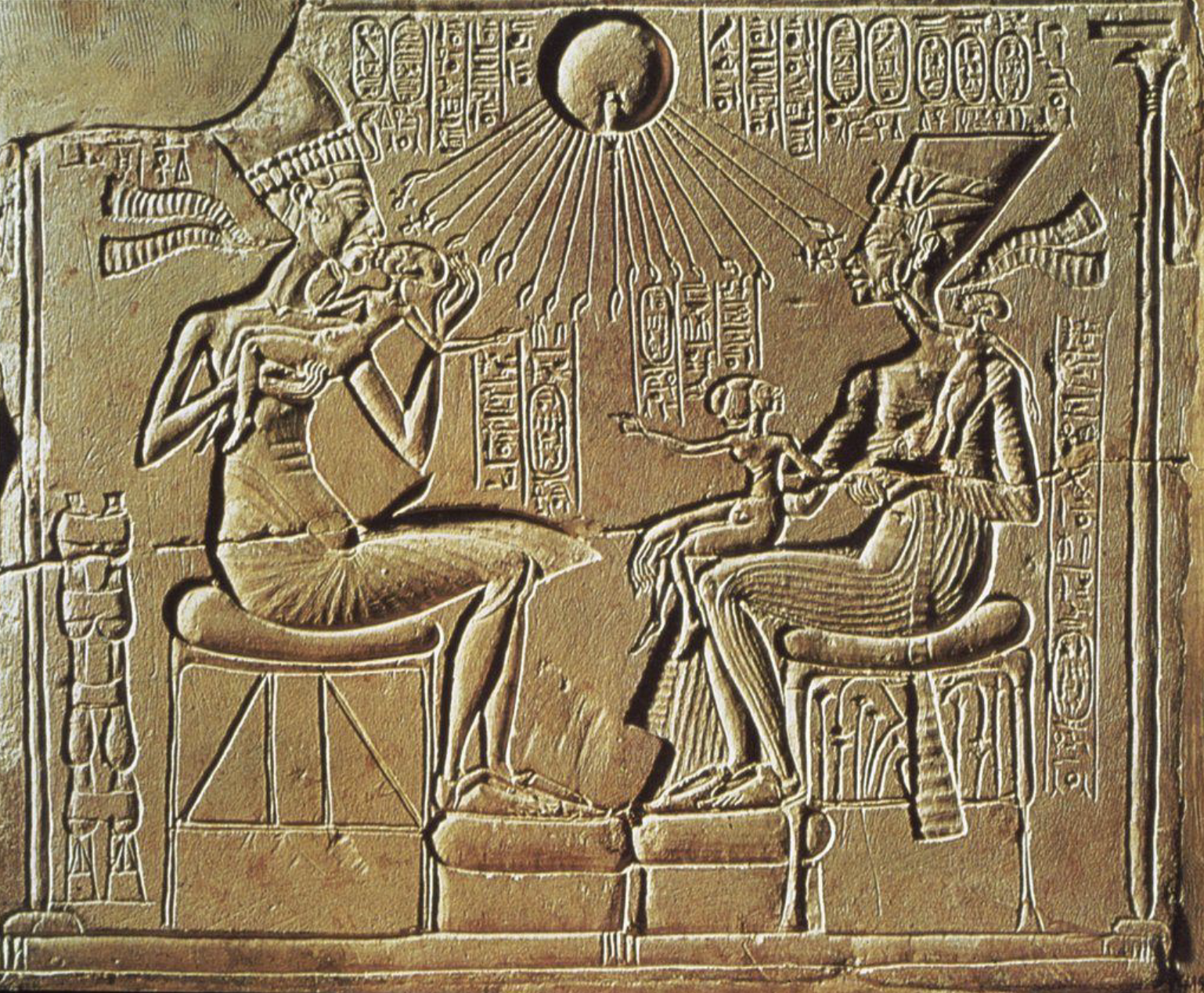
Akhenaten, Nefertiti & Daughters Blessed by Aten (Aten: god of the Solar Disc) c. 1360 BCE limestone Tell el Amarna, Egypt
EGYPT
Themes -
Art as a representation of politics and government
Art as a reflection and/or cause of social stratification
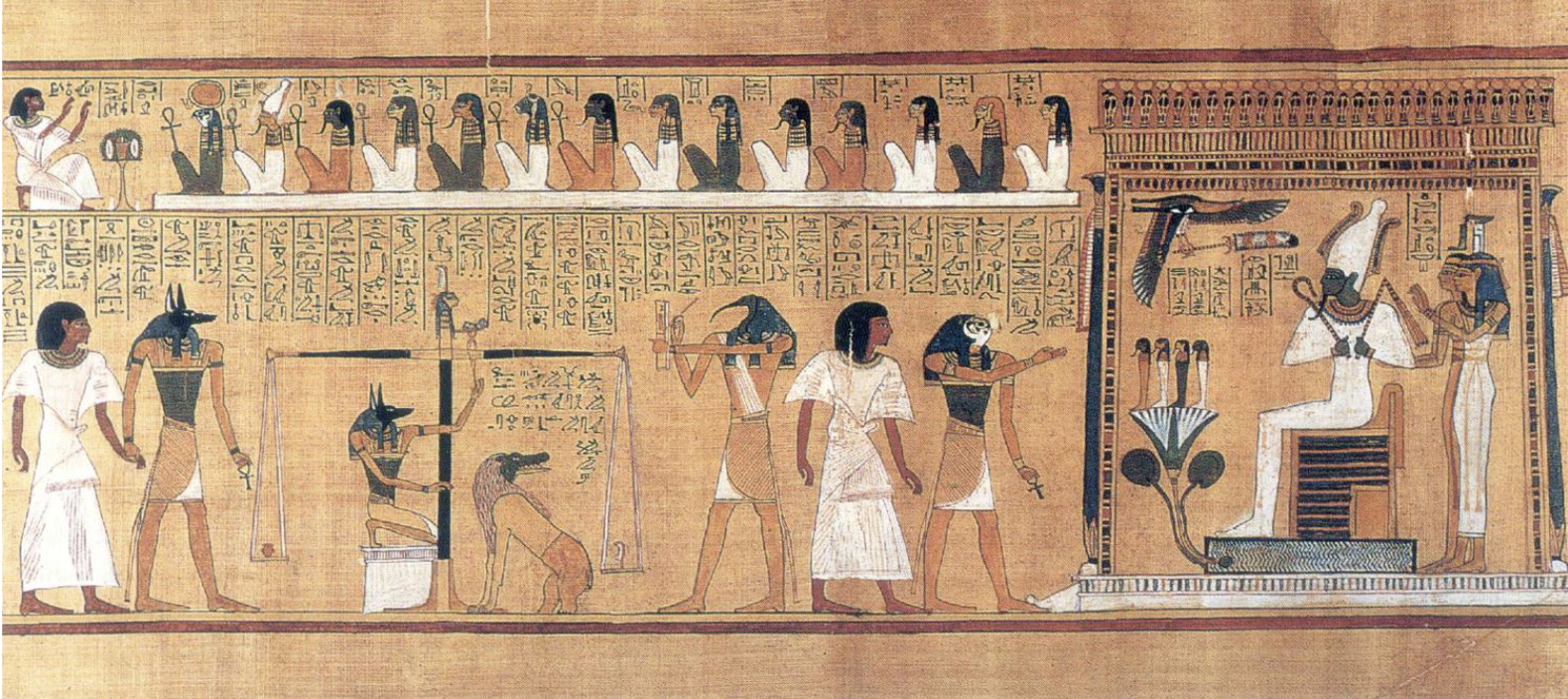
The Book of the Dead “The Weighing of the Heart” and “The Judgment of Osiris” 19th Dynasty, c. 1290-1275 BCE 31
EGYPT
Themes -
The role and position of artists in society
Art in relation to religion, ritual, mythology, spirituality, etc
The impact of writing on art and the written record in defining the history of art
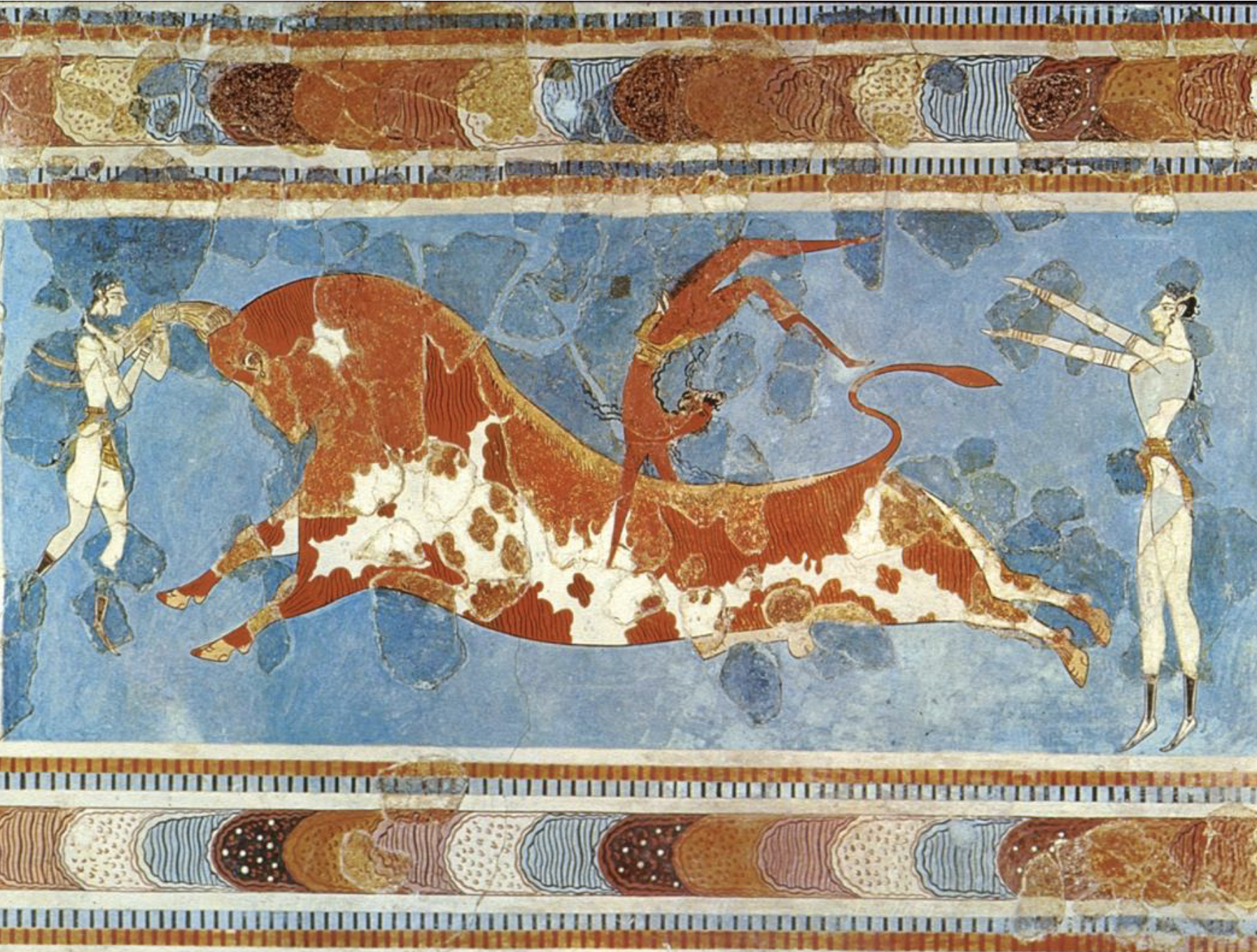
The Bull-Leaping Fresco Knossos c. 1400 BCE
AEGEAN
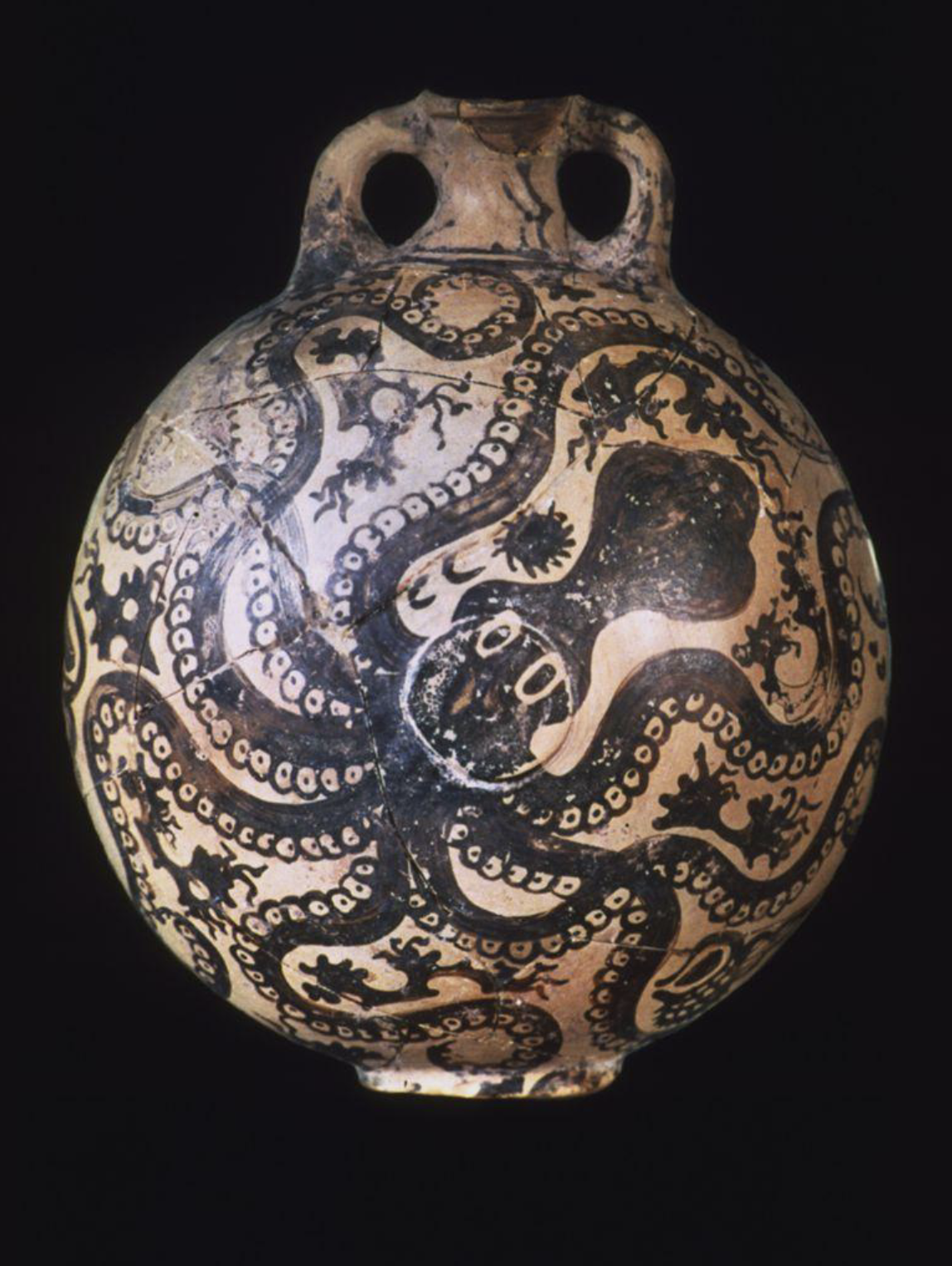
“Marine Style” Pottery, Octopus Vase, 11” c. 1500 BCE
AEGEAN
Themes -
The influence of the natural environment in art
The influence of technology and technical skill in art
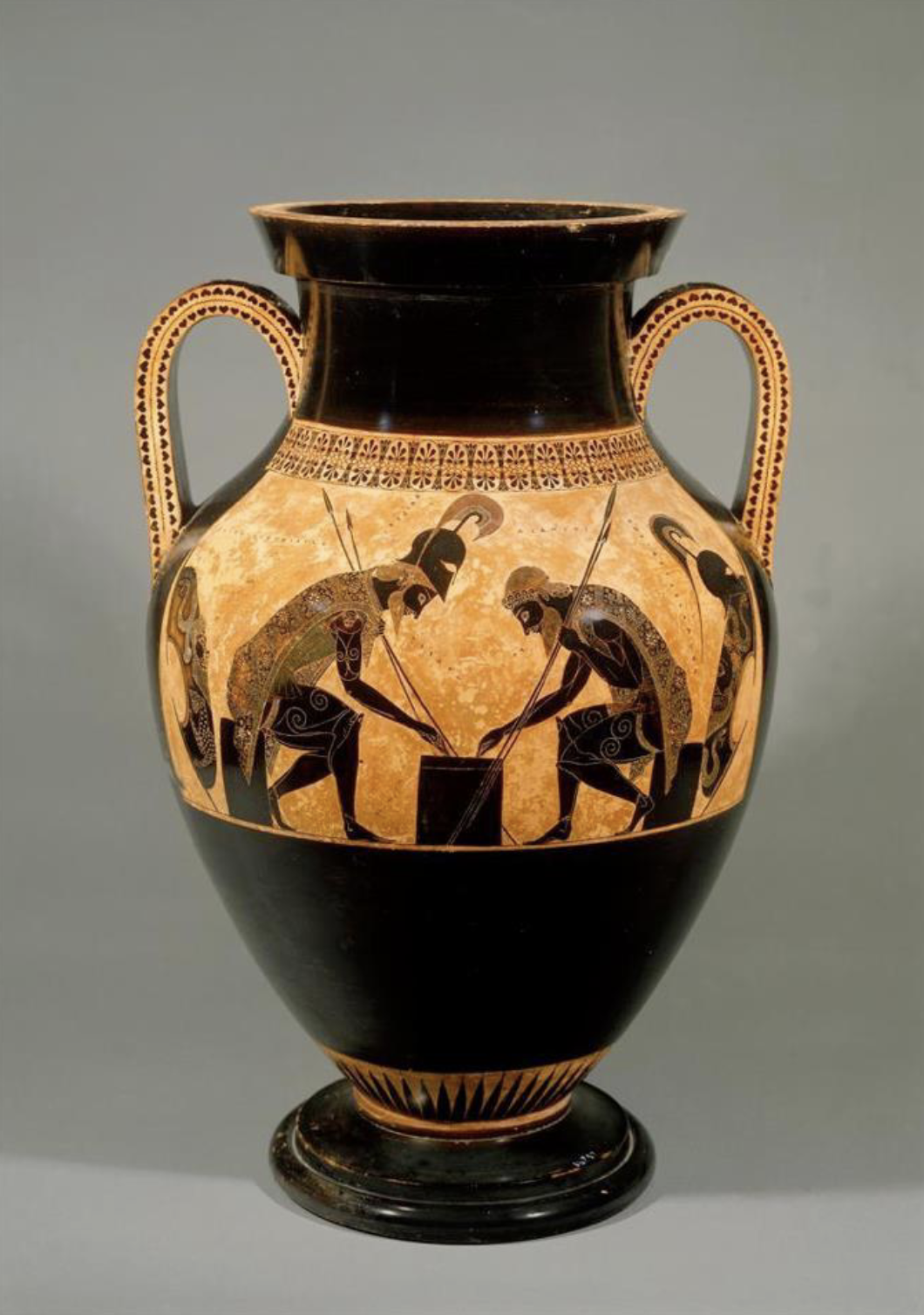
Achilles and Ajax Playing Dice, by Exekias, Athens, c. 540-530 BCE Amphrora vase, 2’ high
ARCHAIC GREESE
Themes -
Art as a representation of politics and government
Art as a representation of and/or tool of warfare
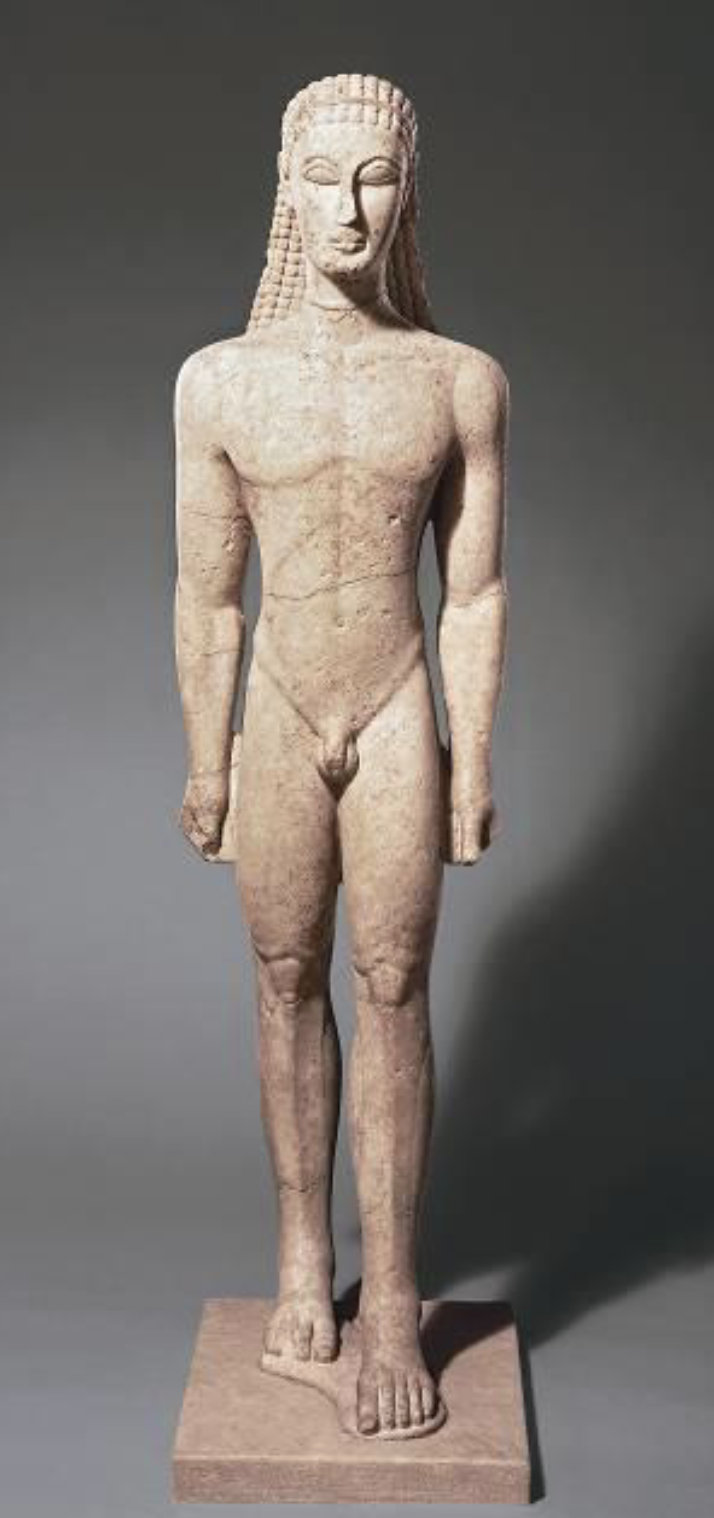
“New York” kouros, c. 600 BCE marble, 6’ tall
ARCHAIC GREECE
Themes -
Exchange of ideas, techniques, and/or symbols across cultures
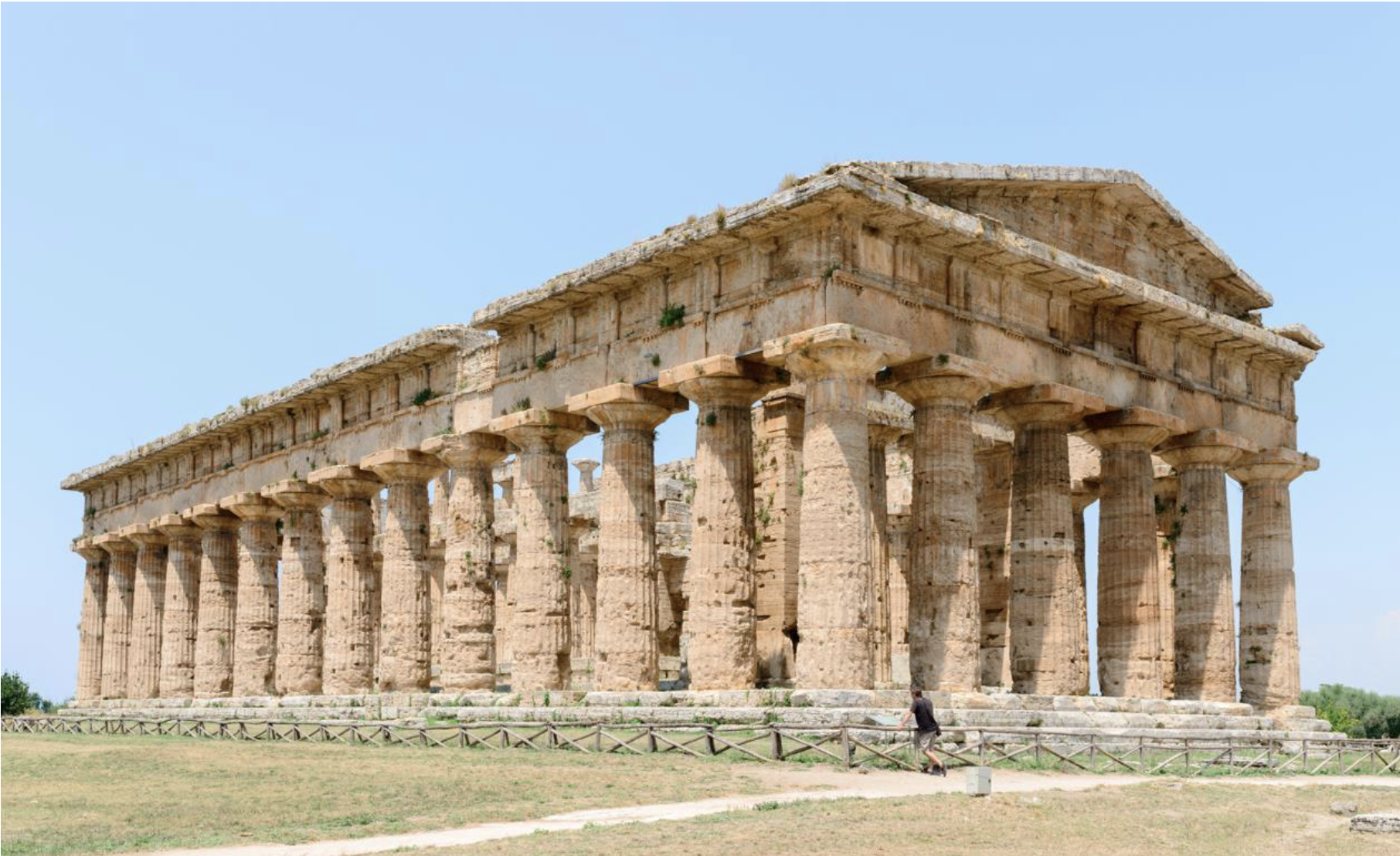
Second Temple of Hera, Paestum, Italy (c. 450 BCE) 32
ARCHAIC GREECE
Themes -
Exchange of ideas, techniques, and/or symbols across cultures
The influence of technology and technical skill in art
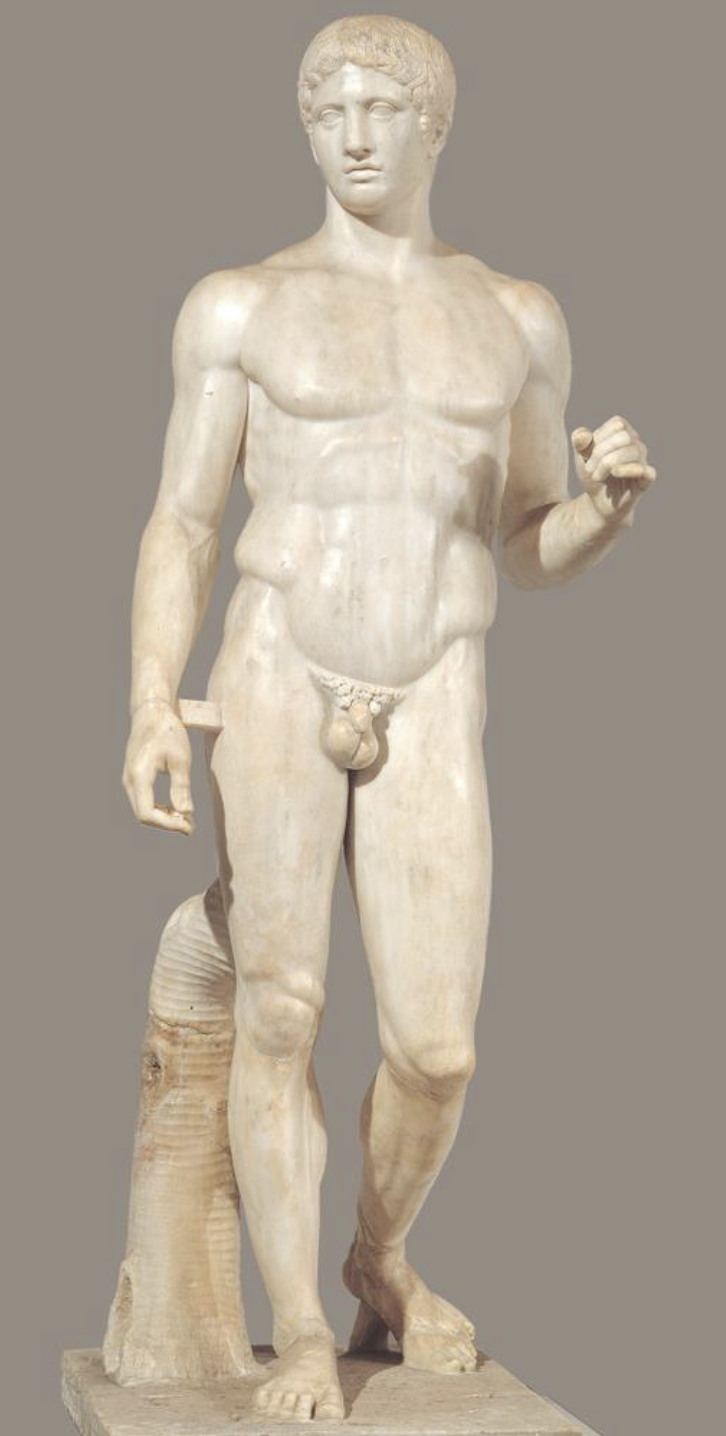
Polykleitos, Doryphoros (Spear Bearer) c. 450 BCE
Classical Greece
Themes -
Exchange of ideas, techniques, and/or symbols across cultures
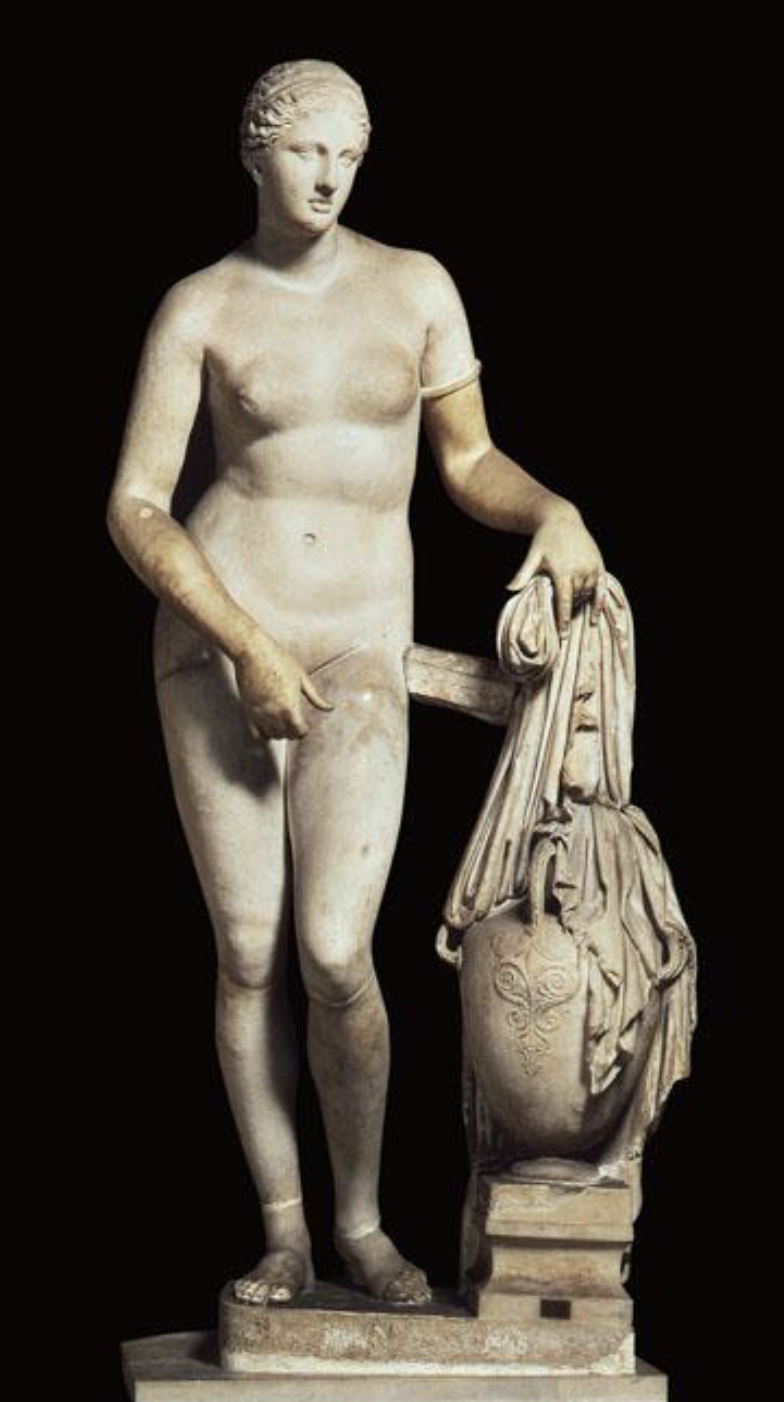
Praxiteles, Aphrodite of Knidos, c. 350 BCE Roman copy
Classical Greece
Themes -
The role and position of artists in society
Art as a representation of politics and government
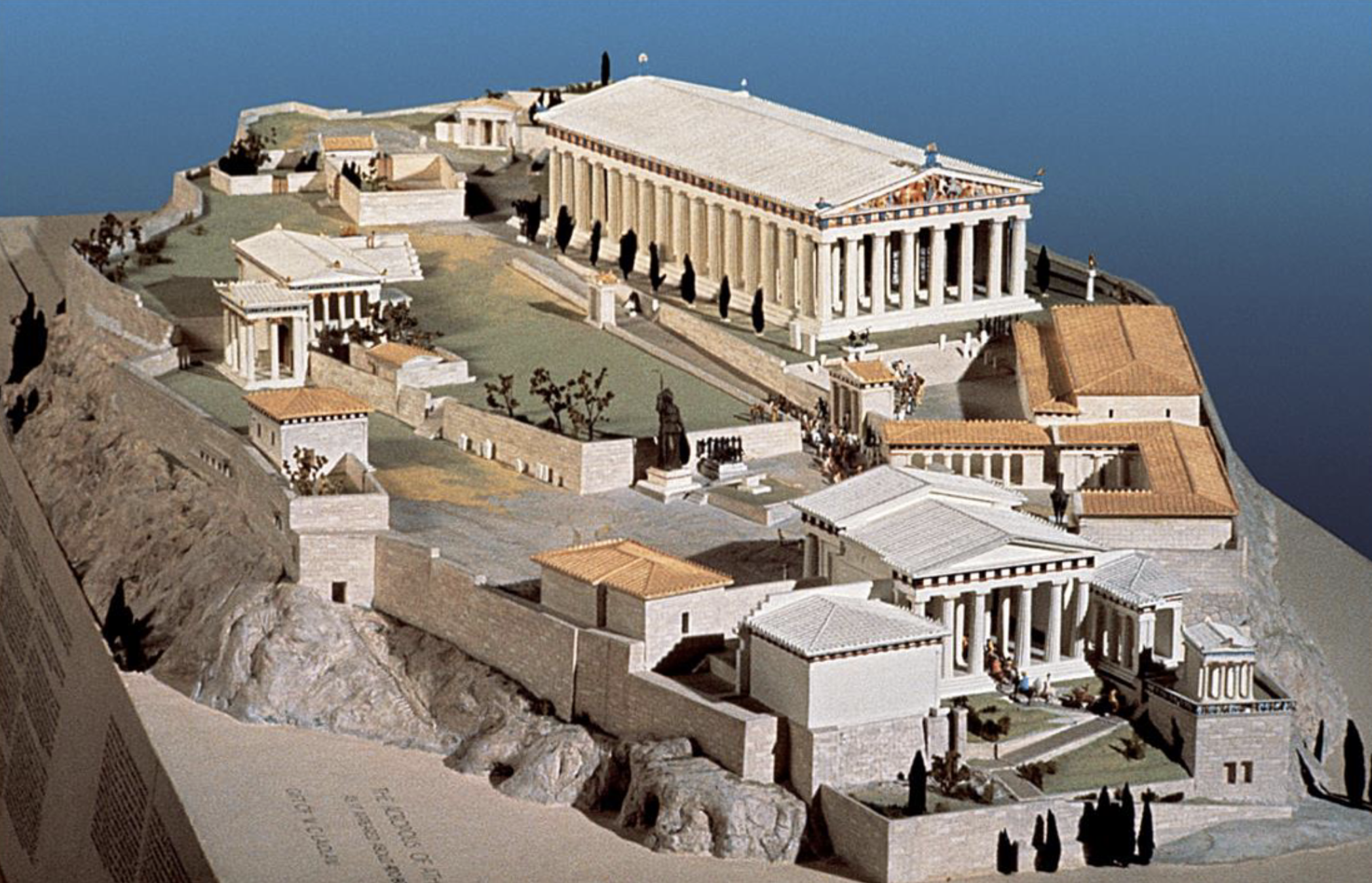
The Acropolis, Athens as Rebuilt Under Pericles, 447-405 BCE Modern Reconstruction 22
Classical Greece
Themes -
Exchange of ideas, techniques, and/or symbols across cultures
The role of archeology as evidence
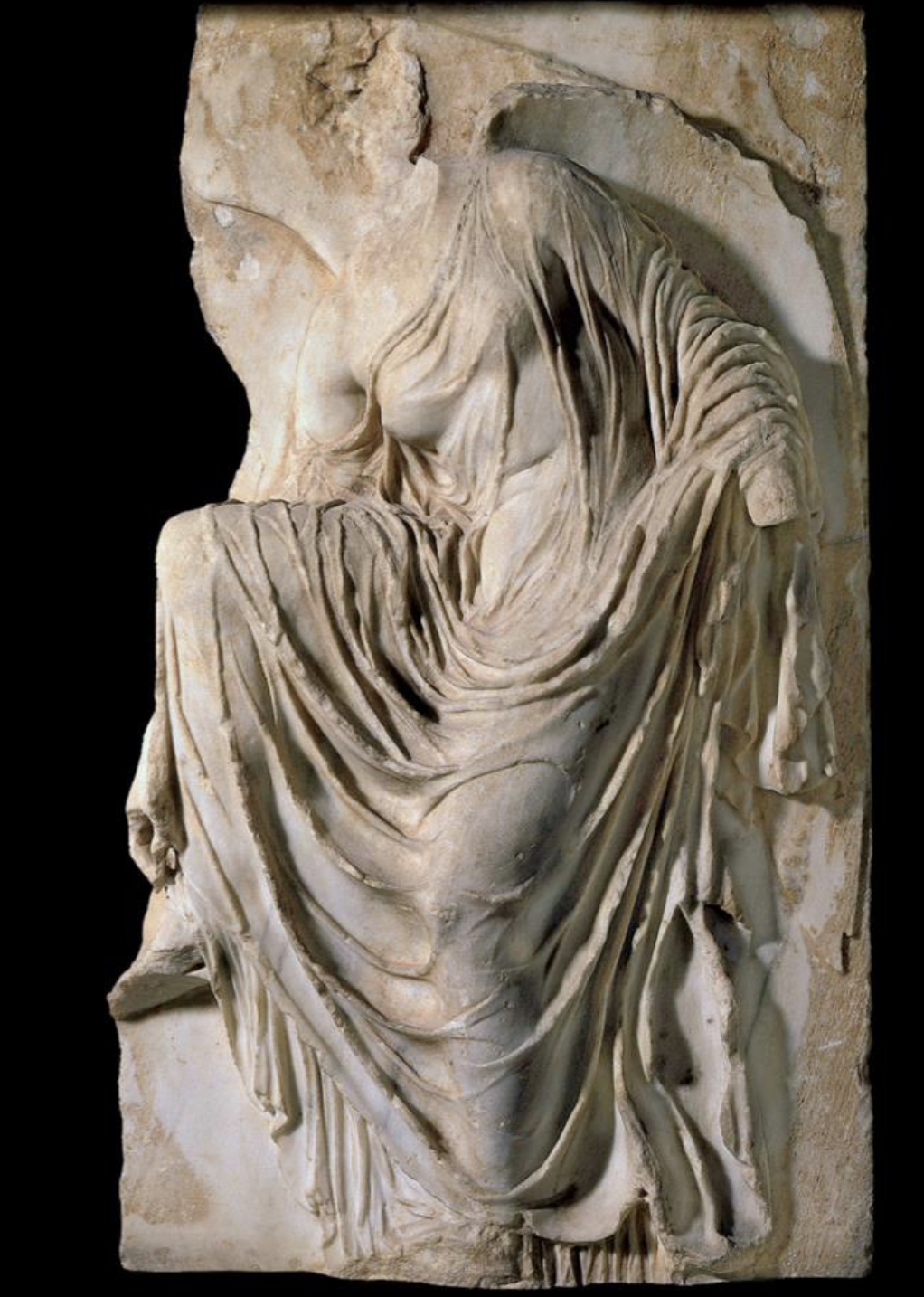
Nike Adjusting Her Sandal From the Parapet of the Temple of Athena Nike Acropolis, Athens c. 410-407 BCE
Classical Greece
Themes -
Art in relation to religion, ritual, mythology, spirituality, etc.
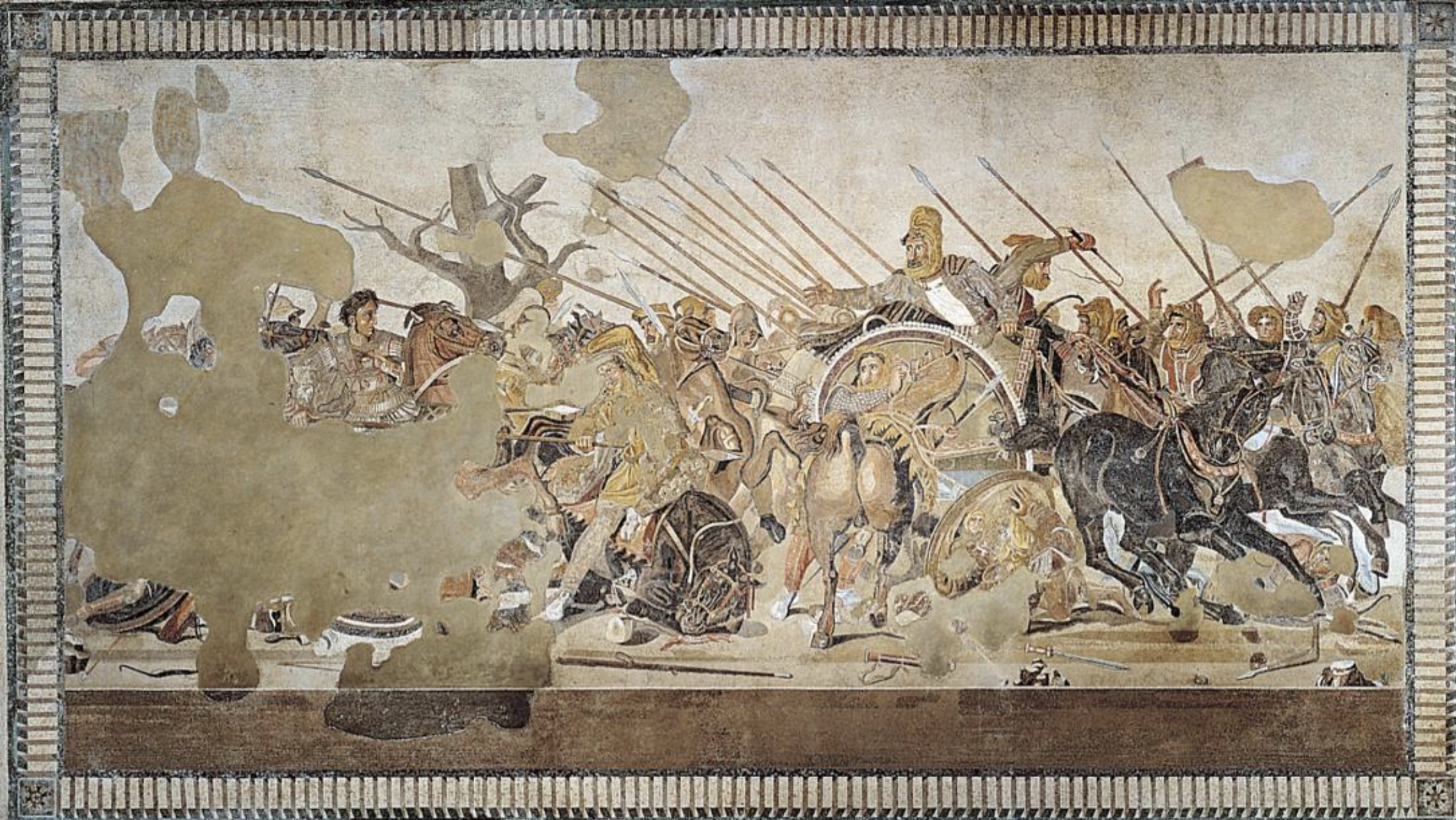
The Battle of Issos (Alexander the Great Defeats the Persians Led by Darius) Roman Mosaic after Philoxenos of Eretria original c. 350-300 BCE, this version c. 200-100 BCE
Hellenistic Greece
Themes -
Art as a representation of politics and government
Art as a representation of and/or tool of warfare
Art as a reflection and/or cause of social stratification
The role of archeology as evidence
Art in relation to “prehistory,” “history,” and the concept of “civilization”
The influence of technology and technical skill in art
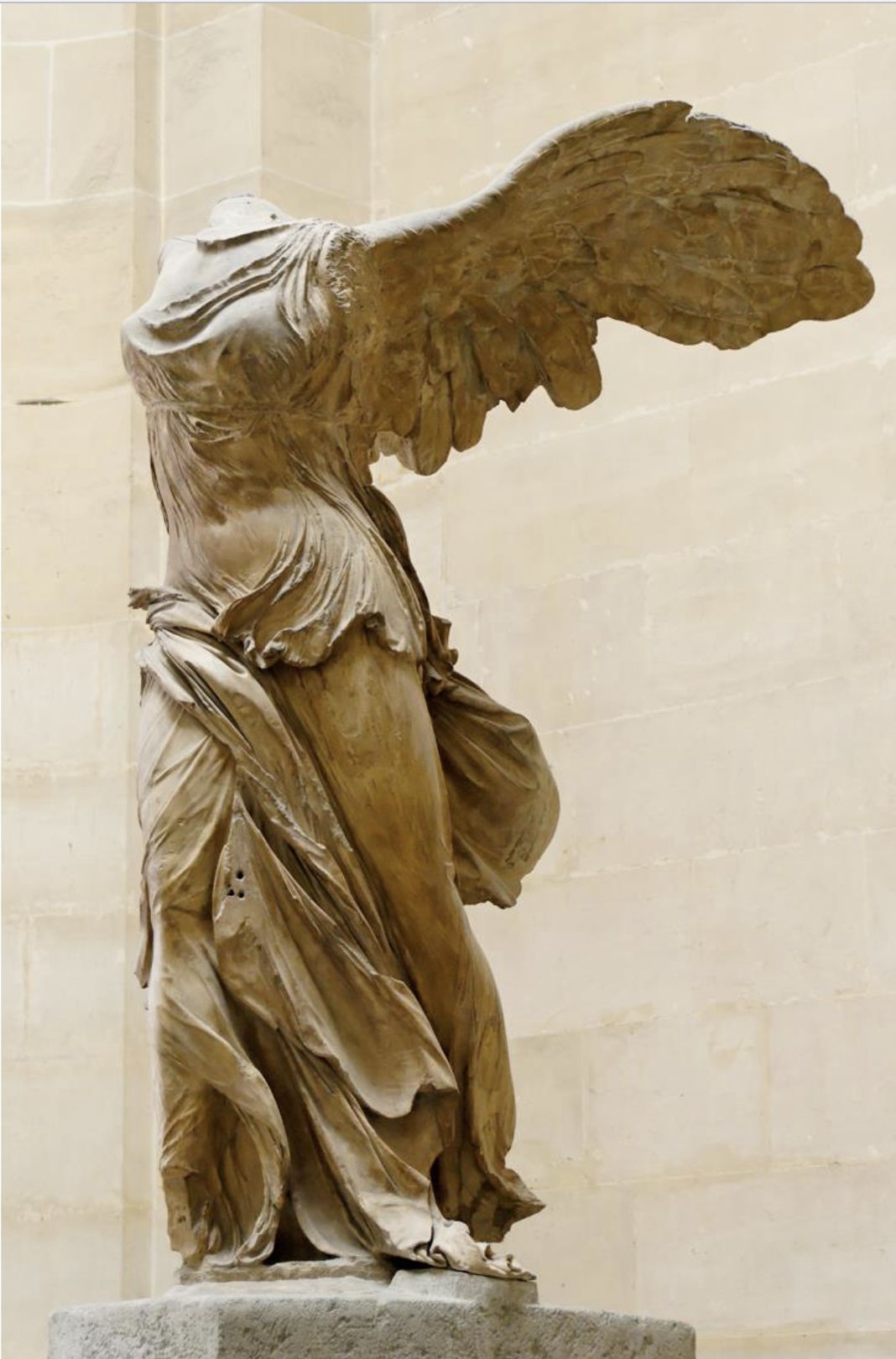
Nike of Samothrace (Attributed to) Pythokritos of Rhodes c. 190 BCE 12
Hellenistic Period
Themes -
Art as a reflection and/or cause of social stratification
Art in relation to religion, ritual, mythology, spirituality, etc
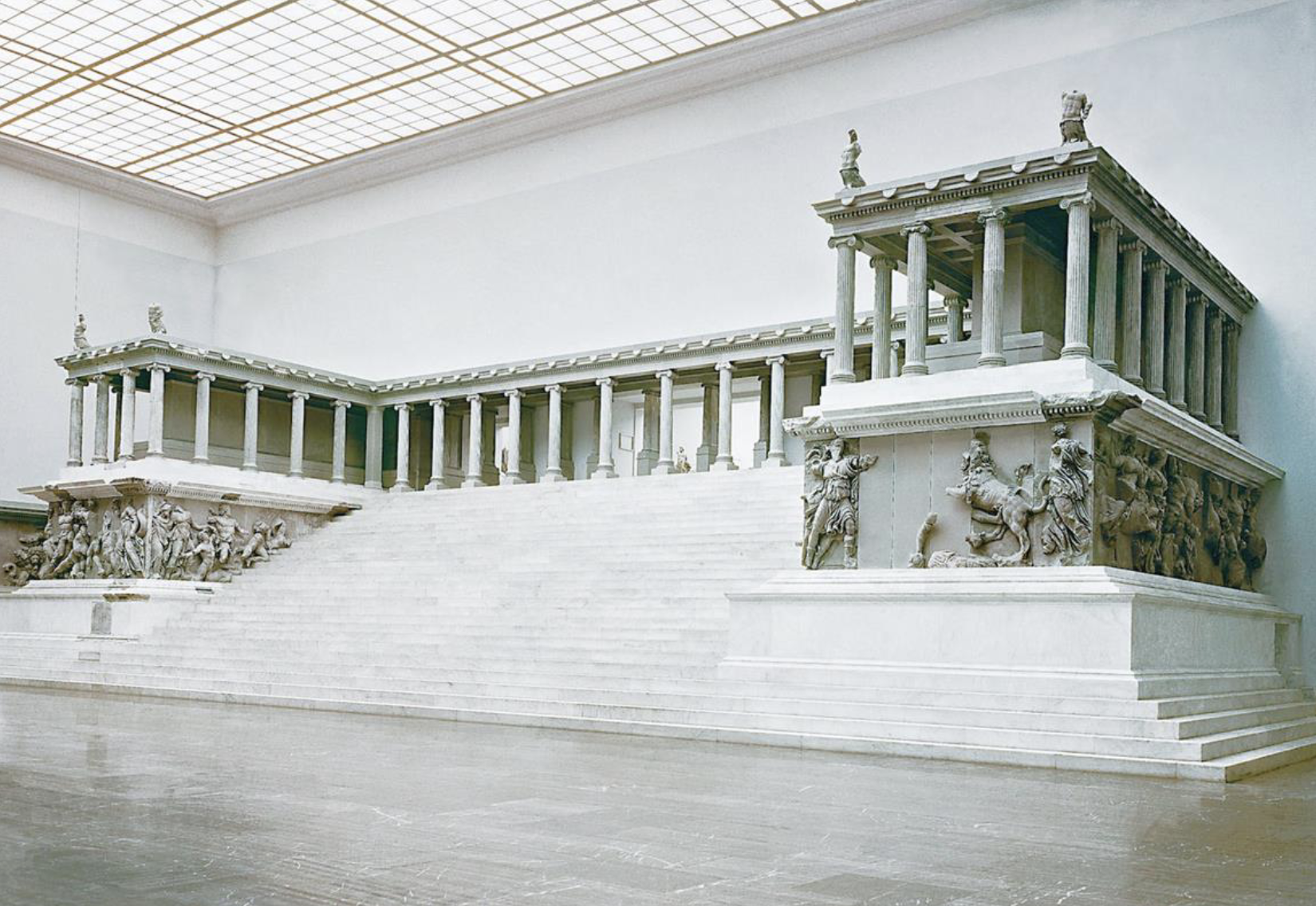
Pergamon Altar, Great Altar to Zeus c. 175 BCE
Hellenistic Greece
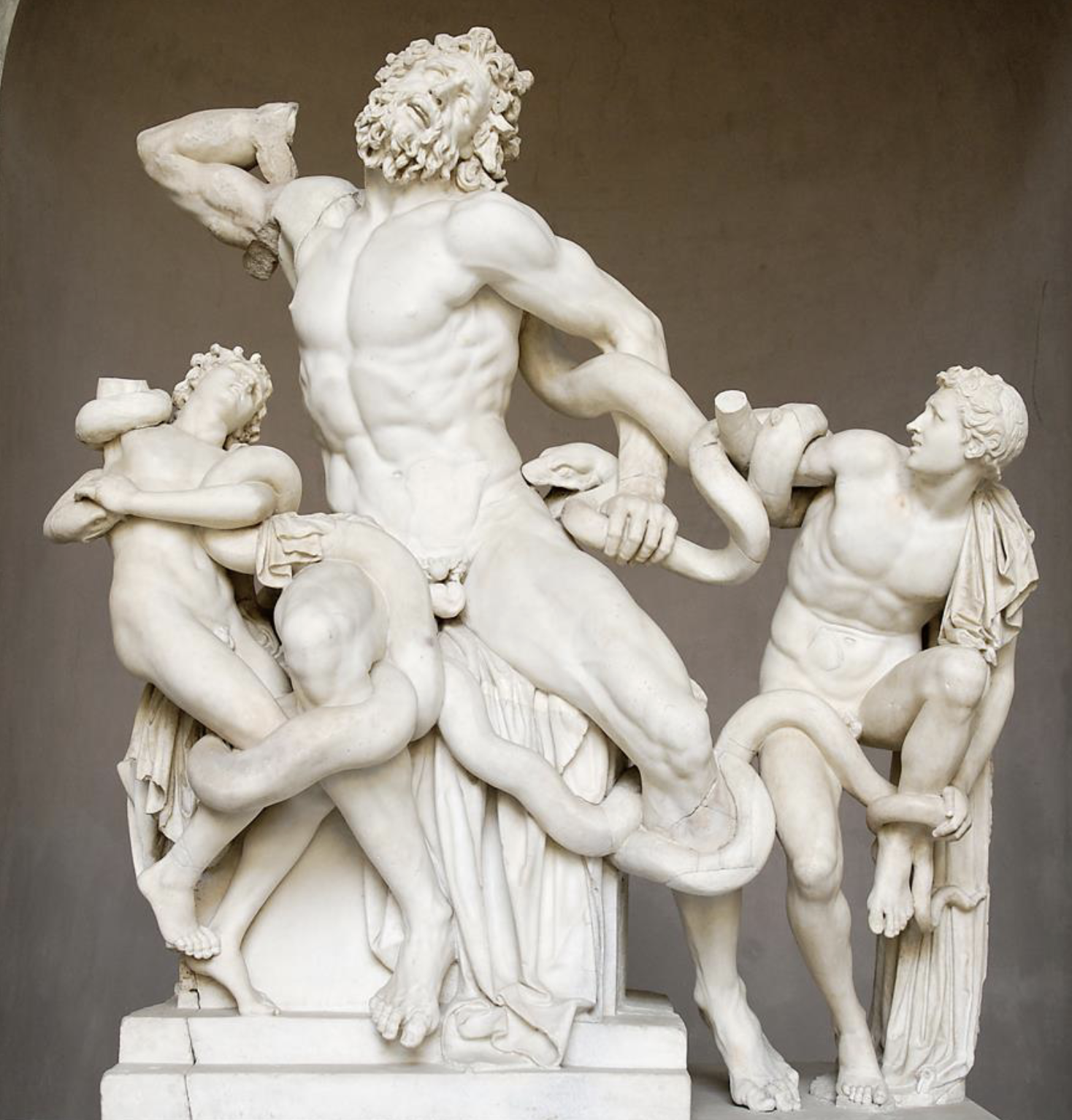
Laocoön Agesander, Polydoros, and Athenodoros of Rhodes c. 175 BCE 25
Hellenistic Greece
Art in relation to religion, ritual, mythology, spirituality, etc
Art as a representation of and/or tool of warfare
The influence of technology and technical skill in art
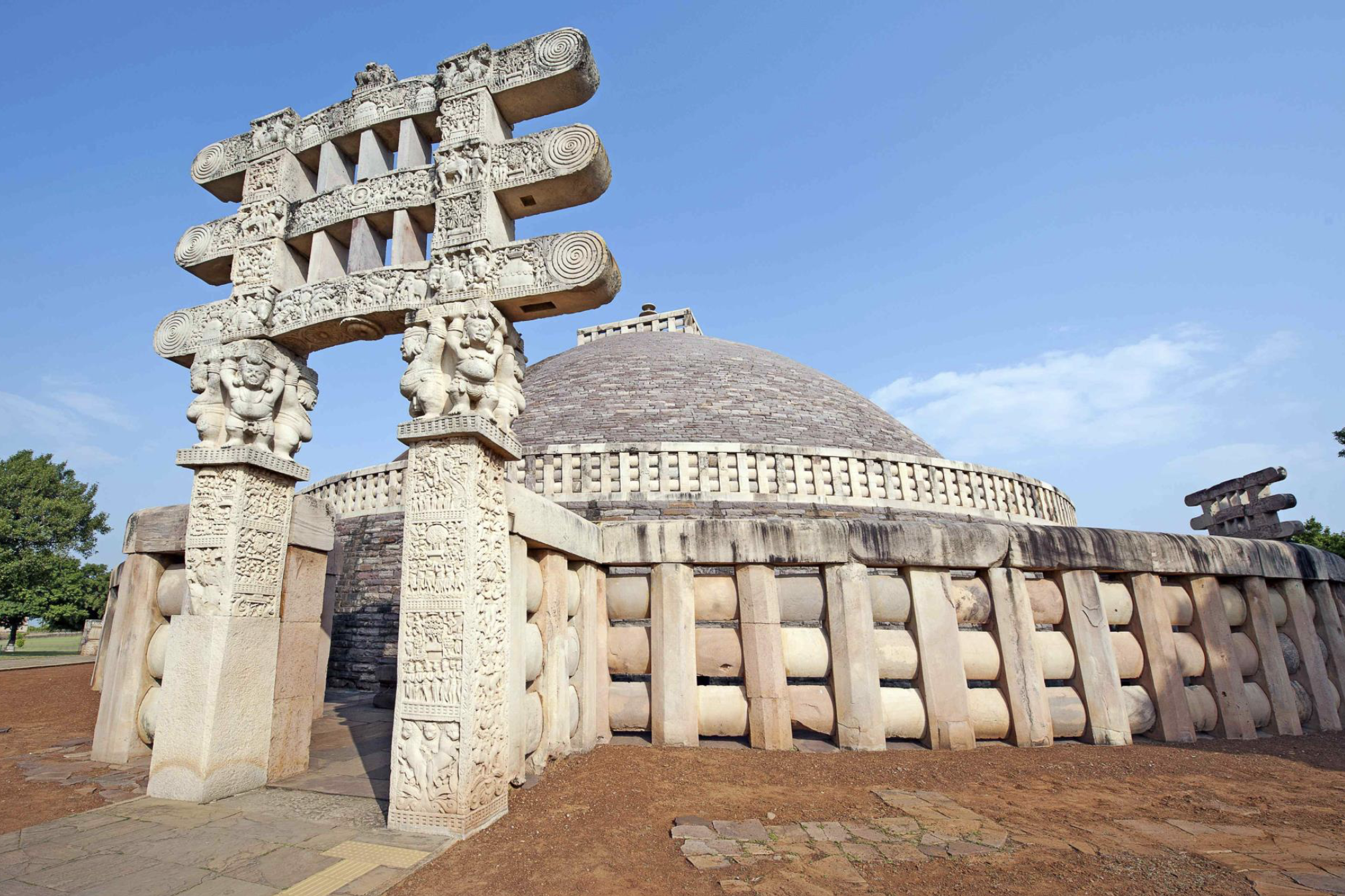
Great Stupa at Sanchi, India (c. 250 BCE)
Indian
Themes -
Art in relation to religion, ritual, mythology, spirituality, etc.
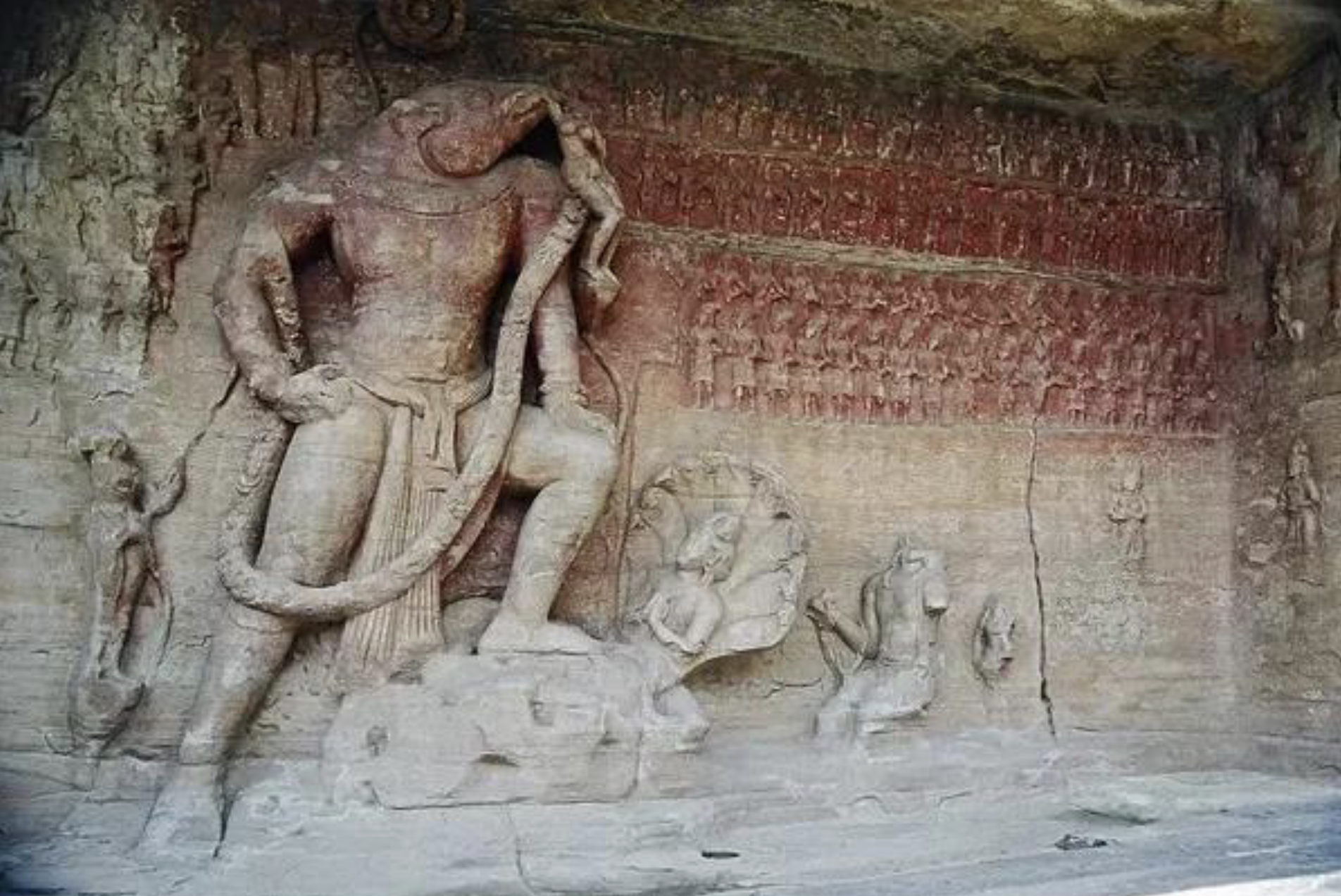
Varaha (Vishnu) rescues earth, 13’ high, Udayagiri Caves, Gupta Empire, c. 400 CE
Themes -
Art in relation to religion, ritual, mythology, spirituality, etc.
The role of archeology as evidence
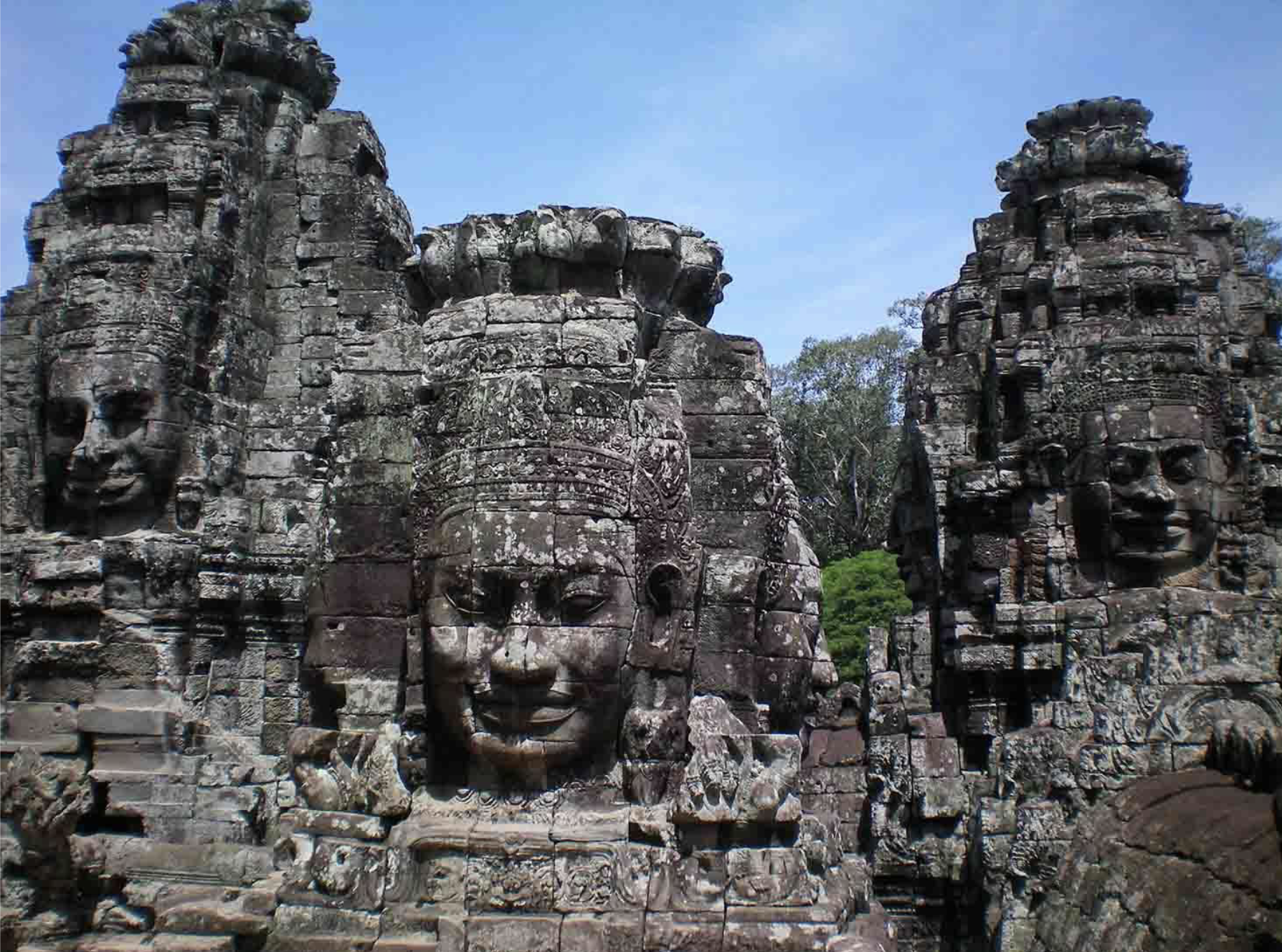
Sculptural reliefs of Jayavarman II (or possibly VII), Bayon Temple, at Angkor Thom, c. 1200 CE
Asia
The role of archeology as evidence